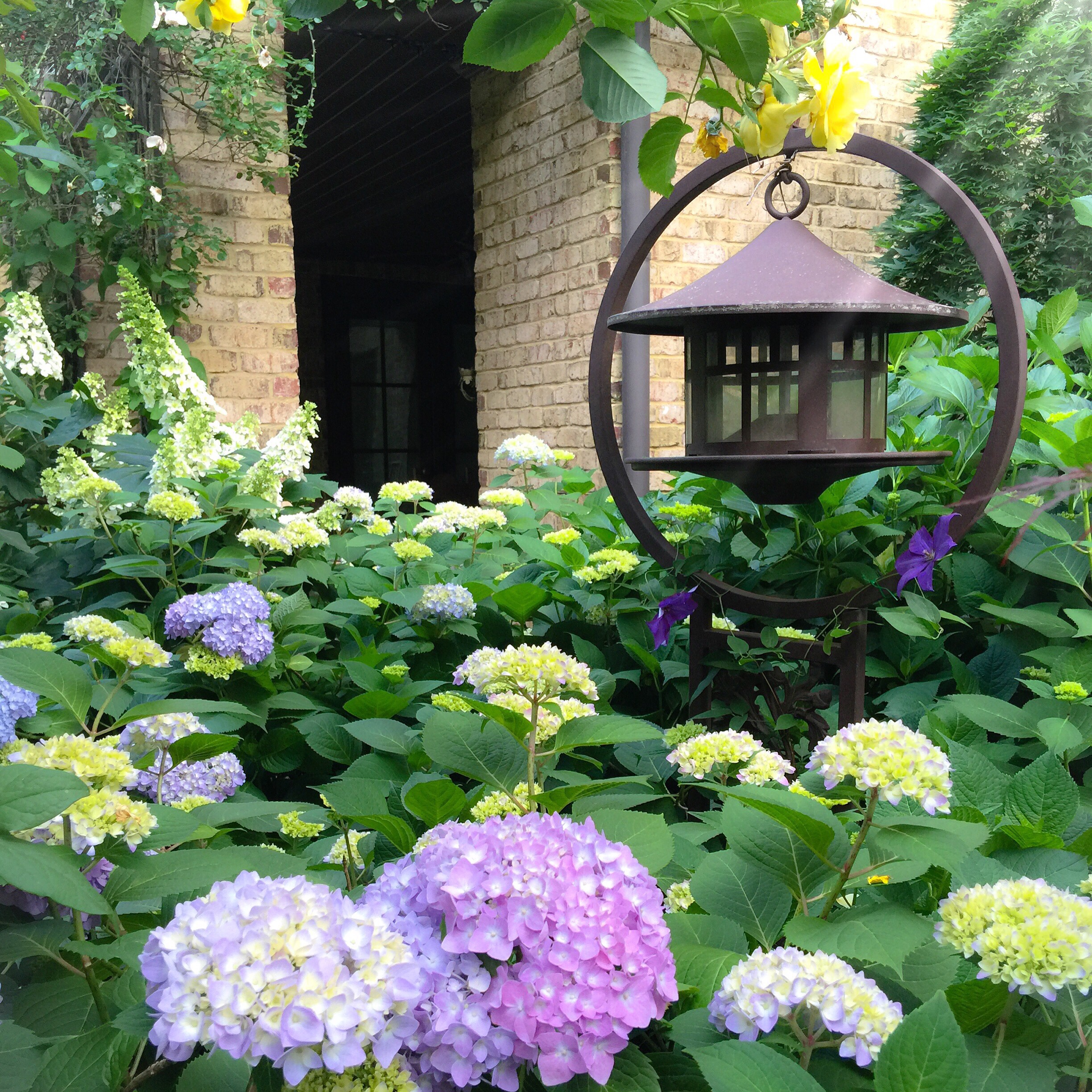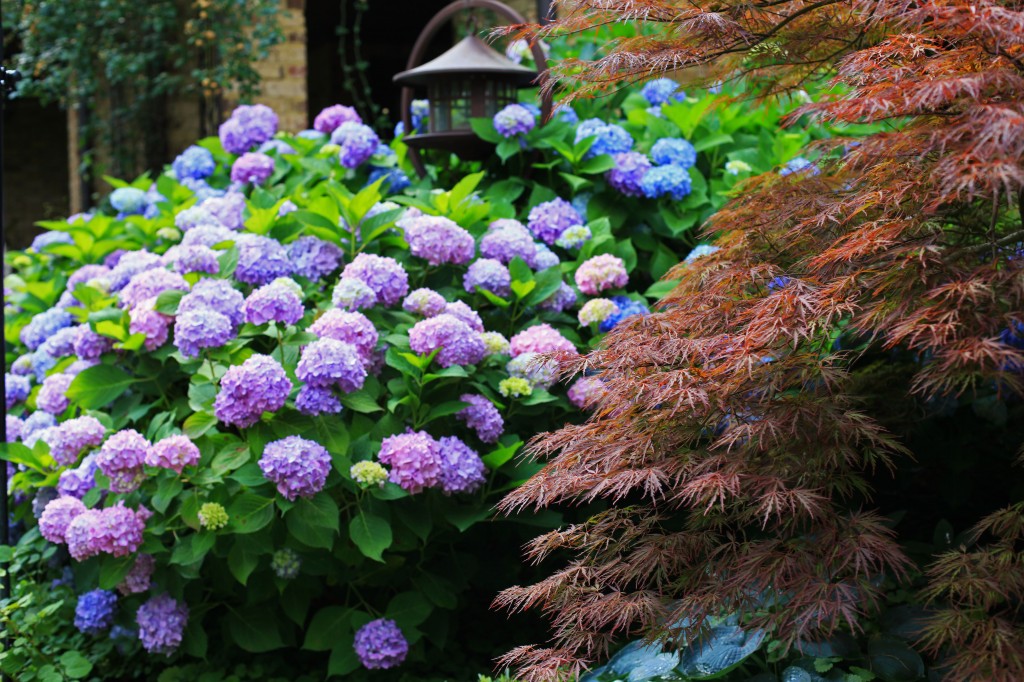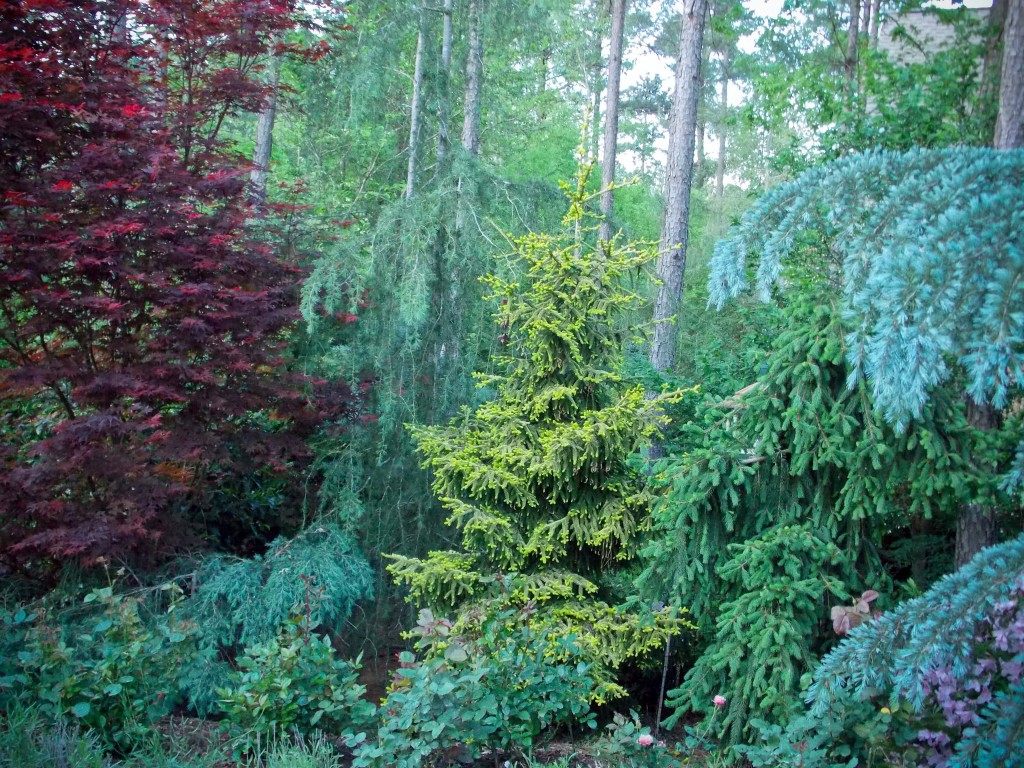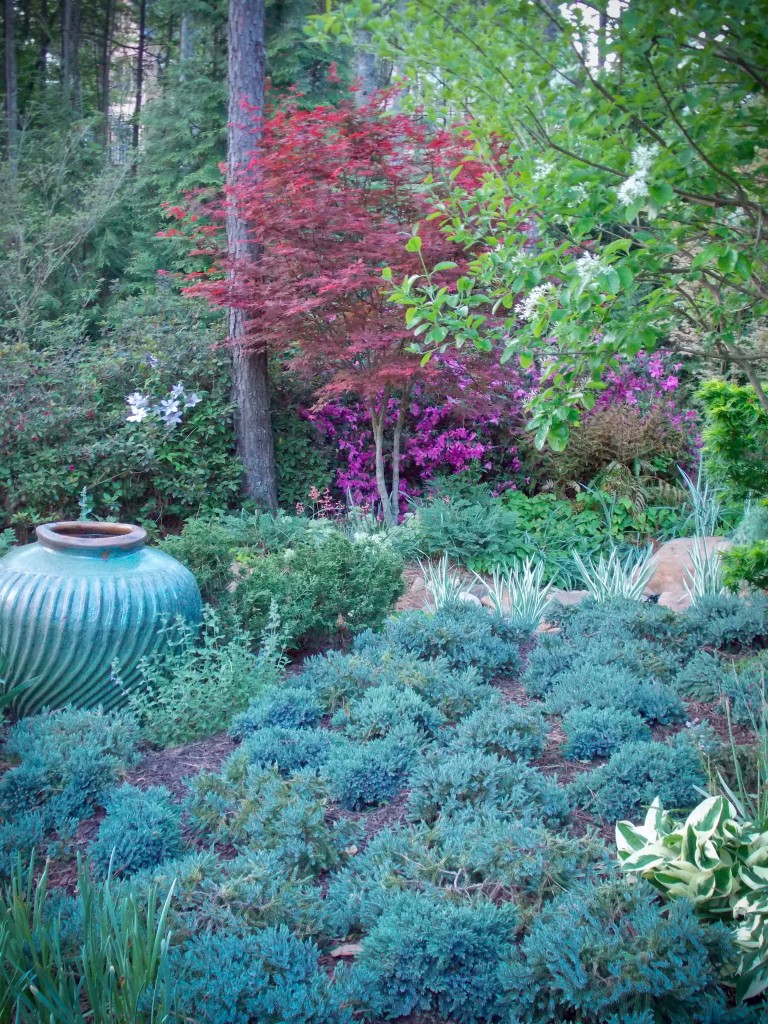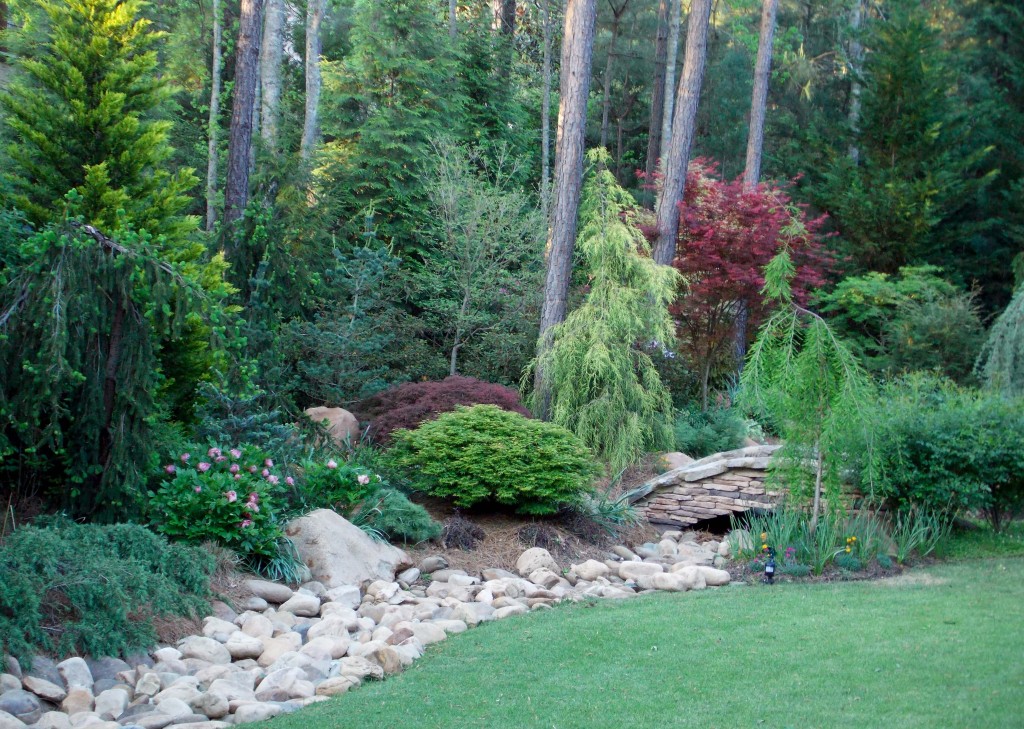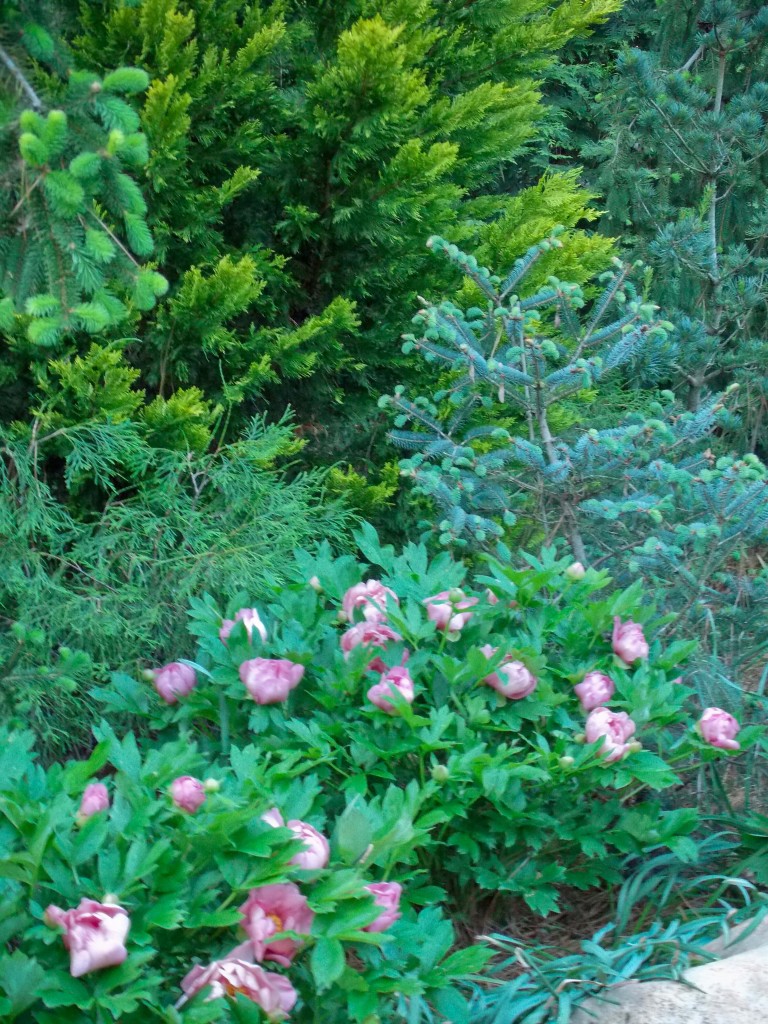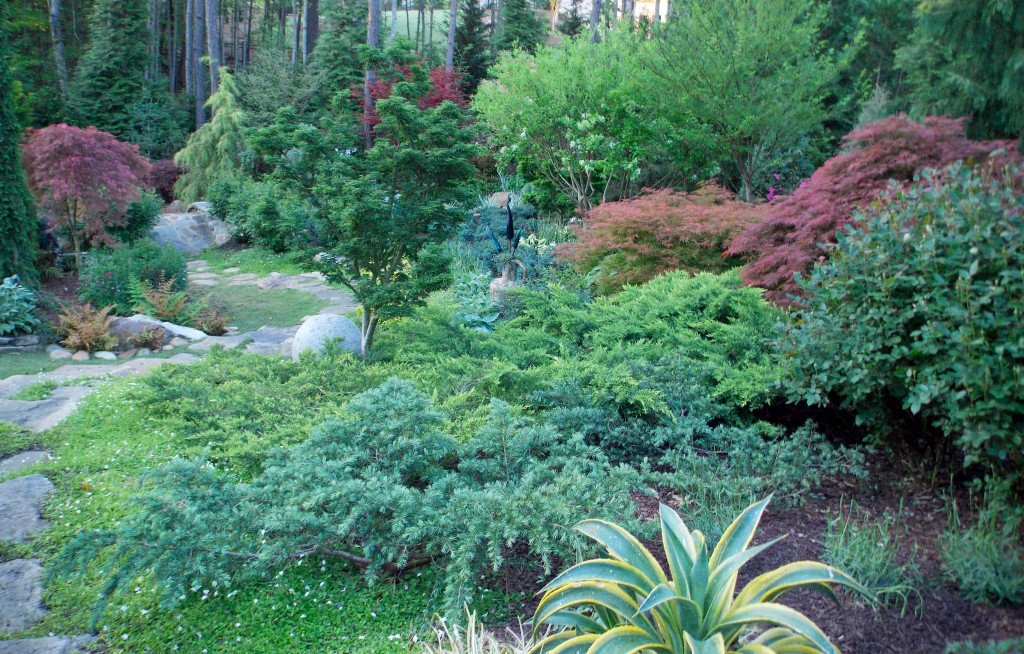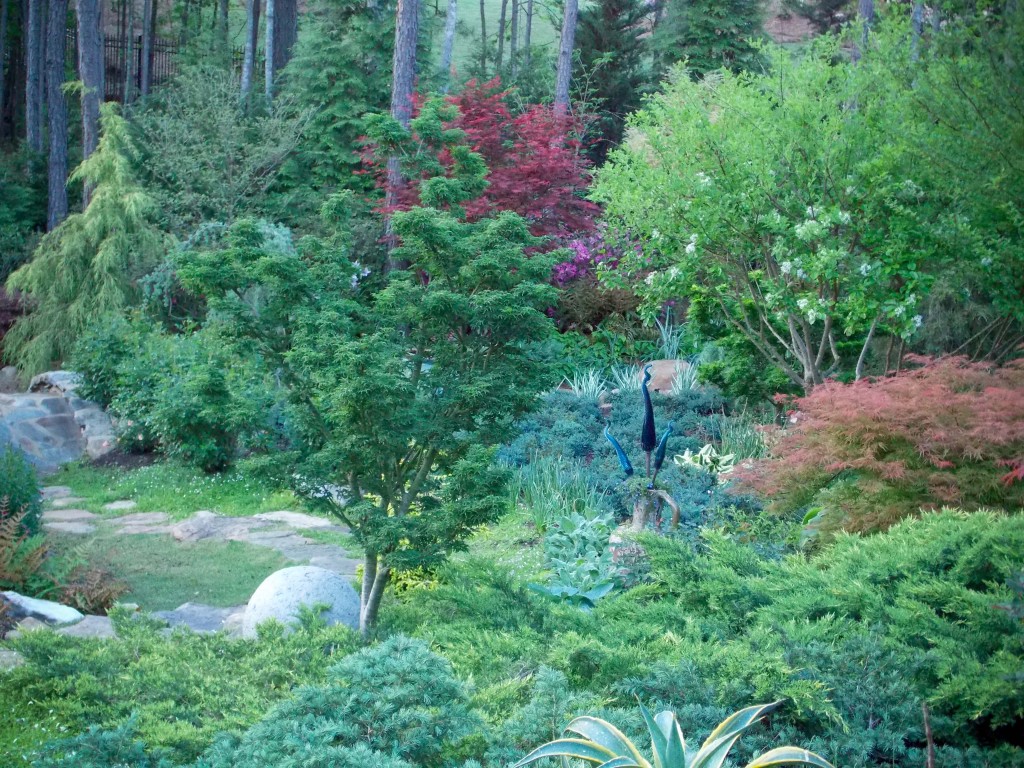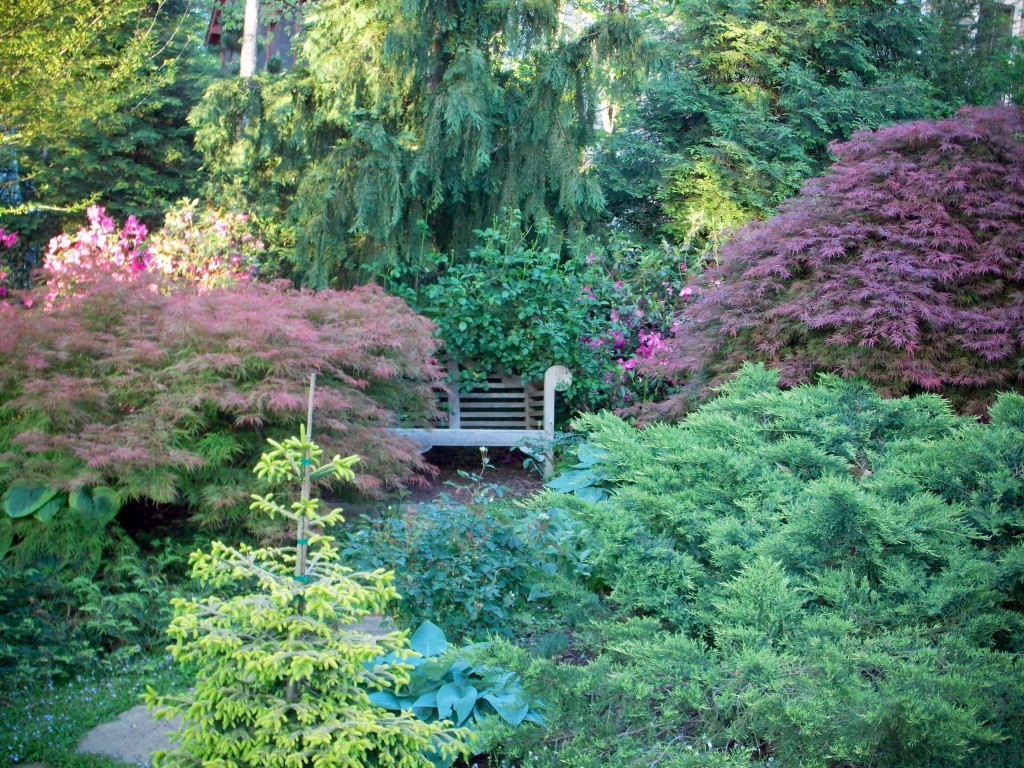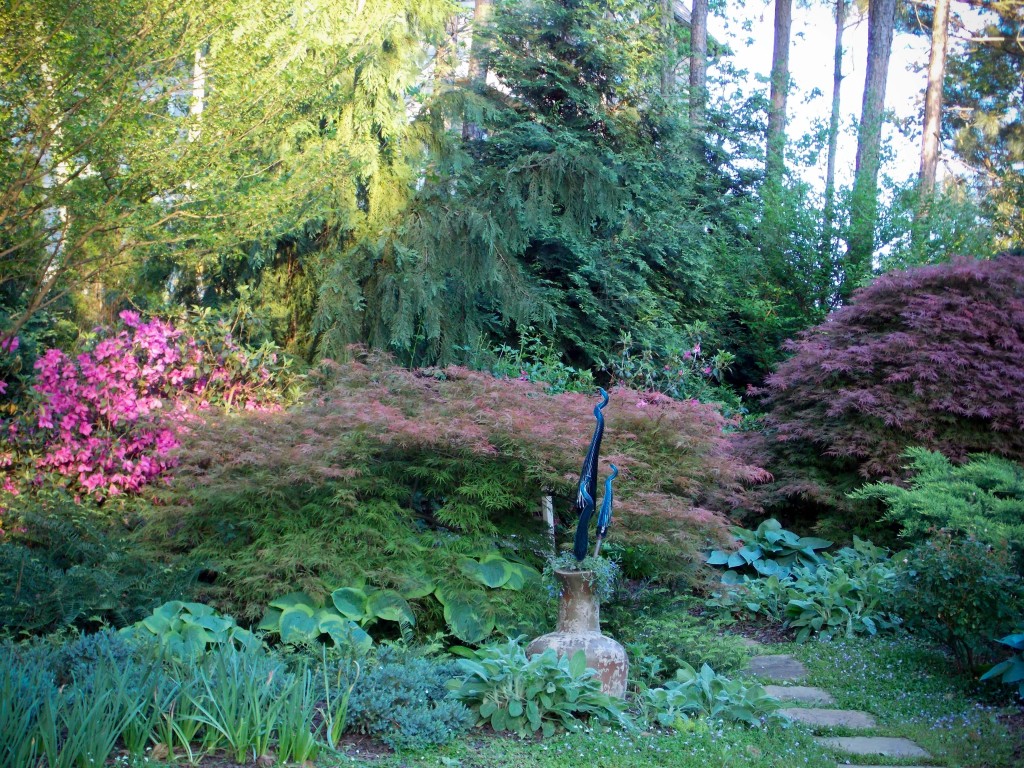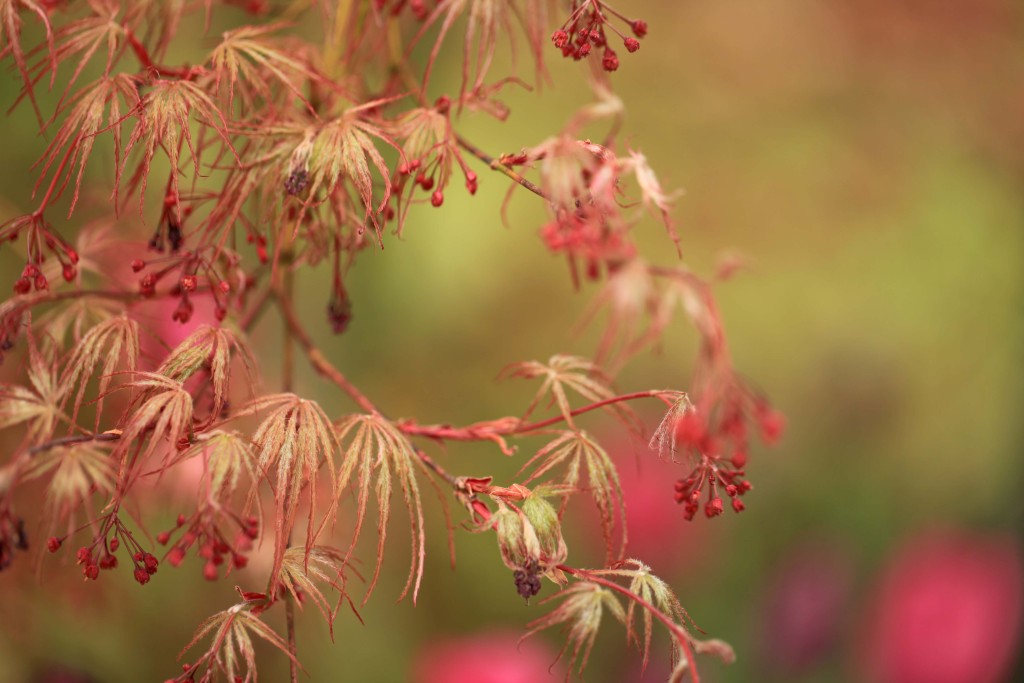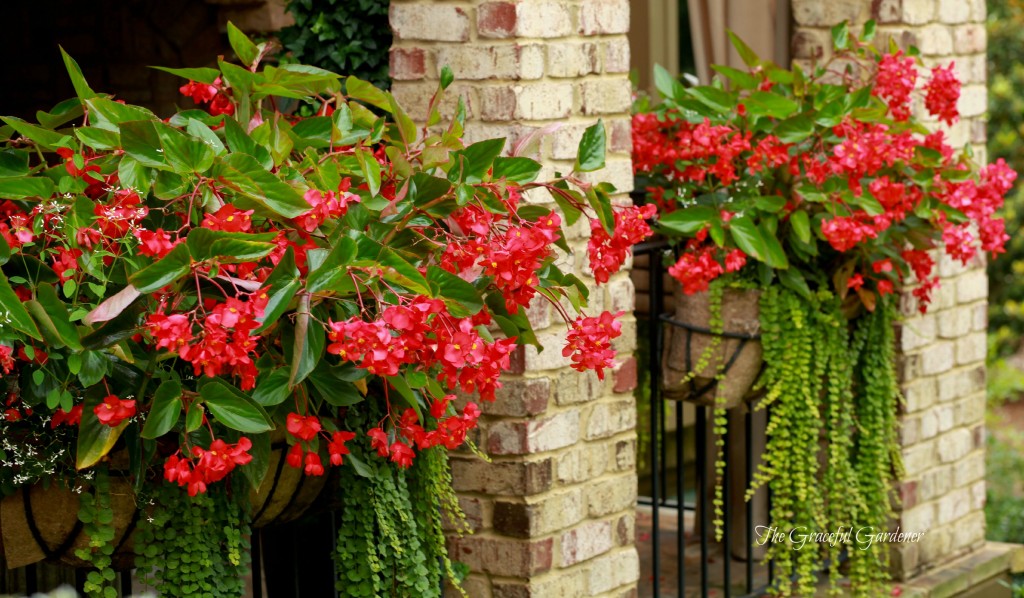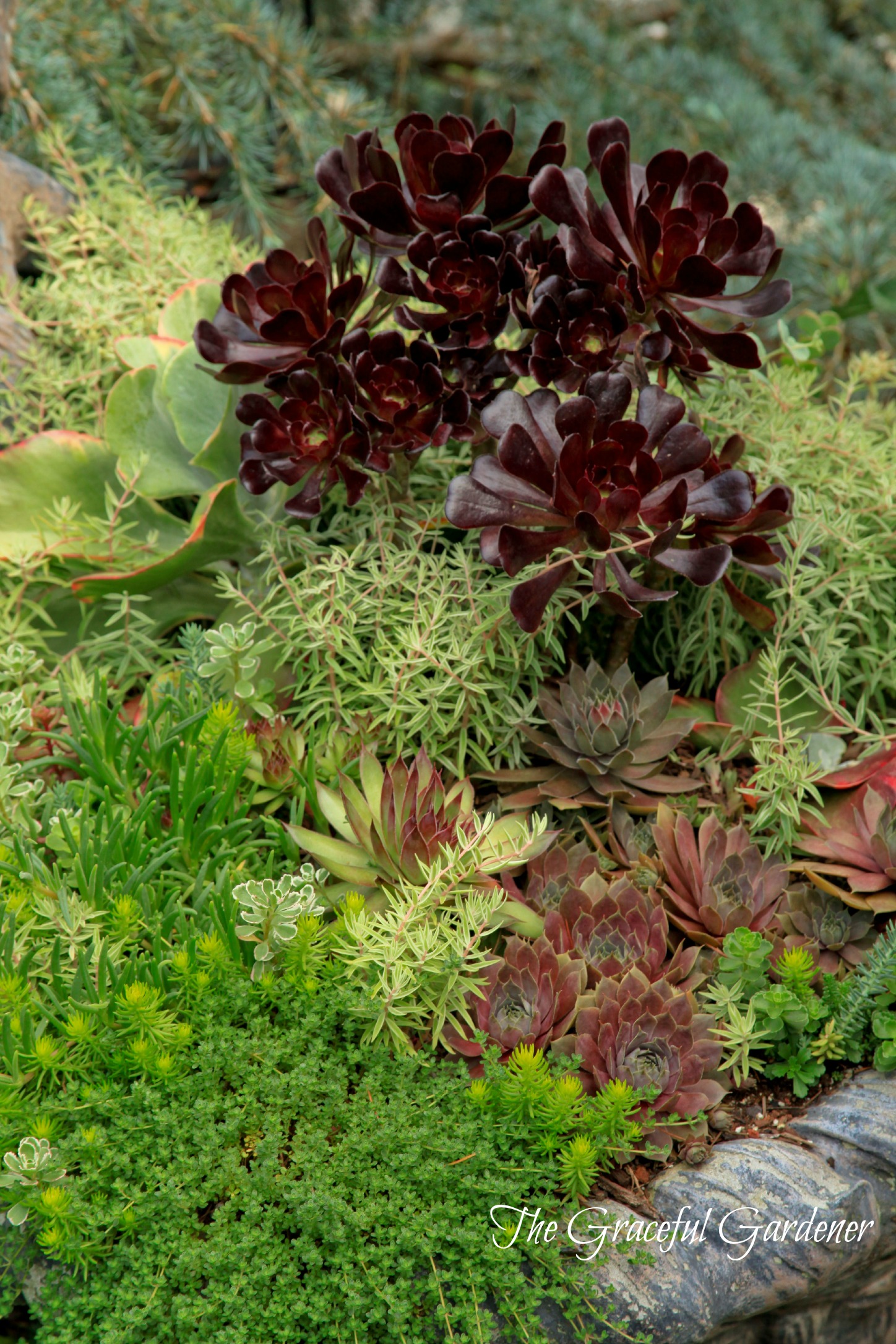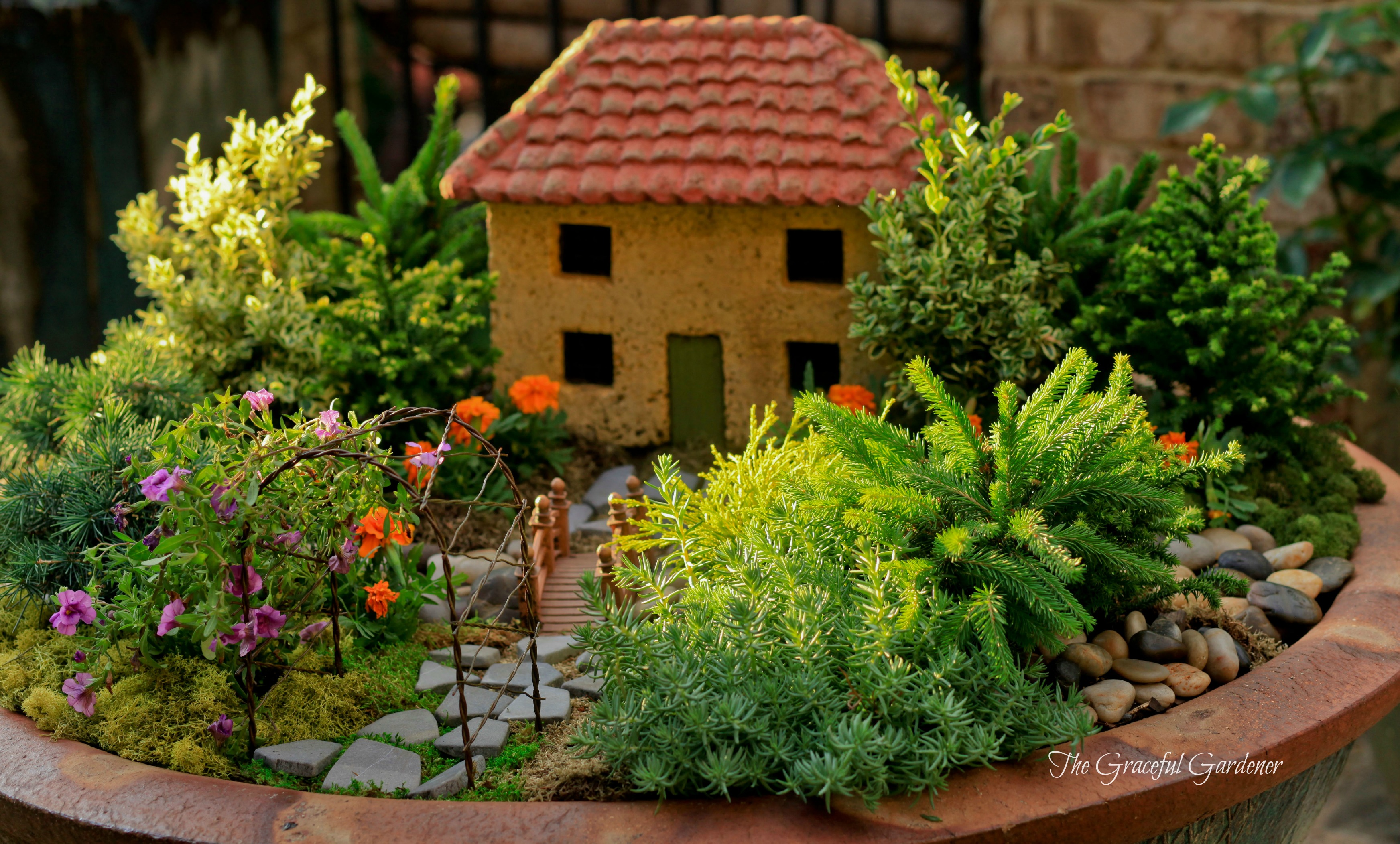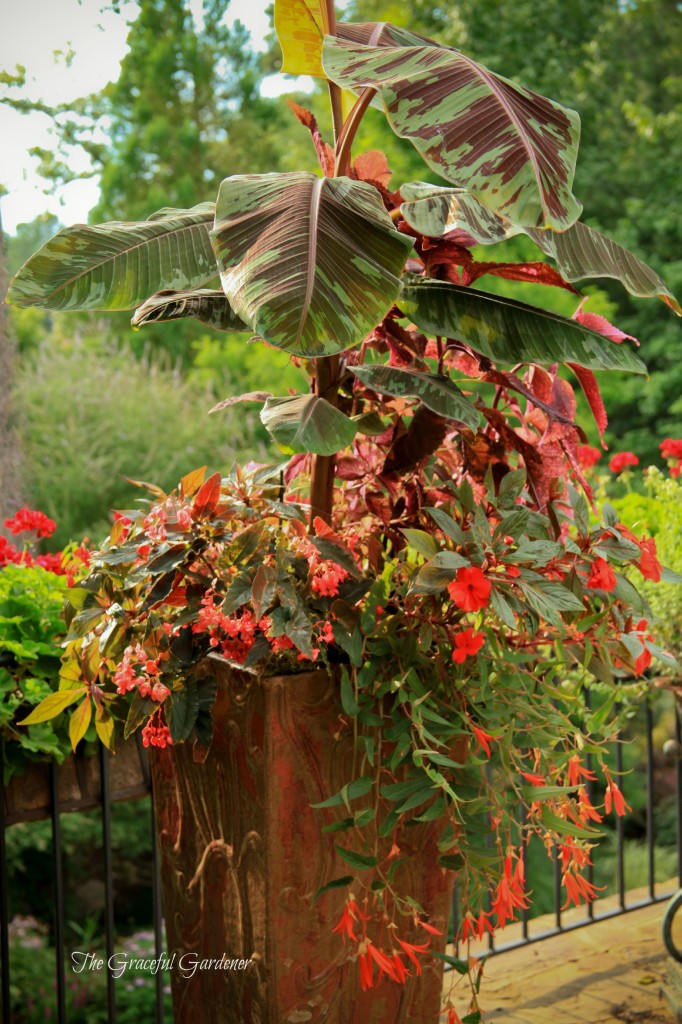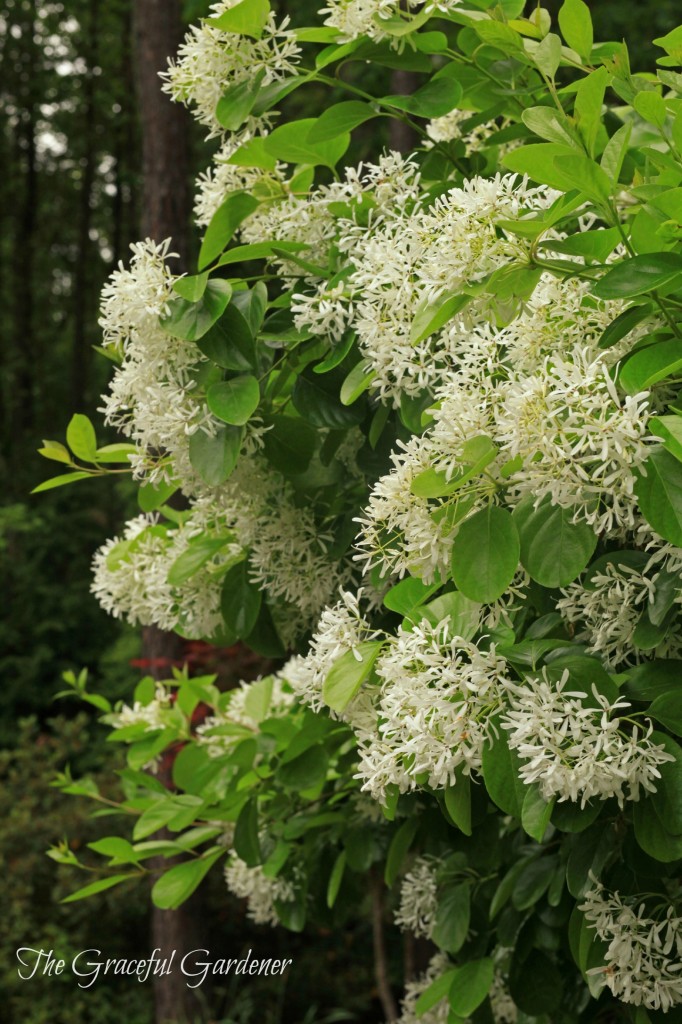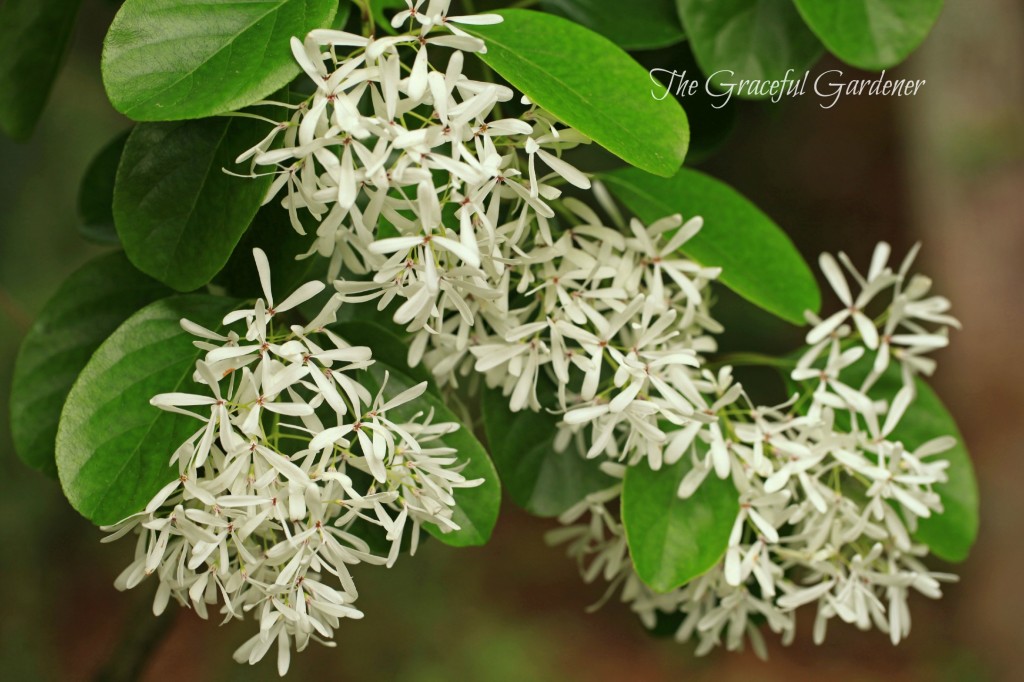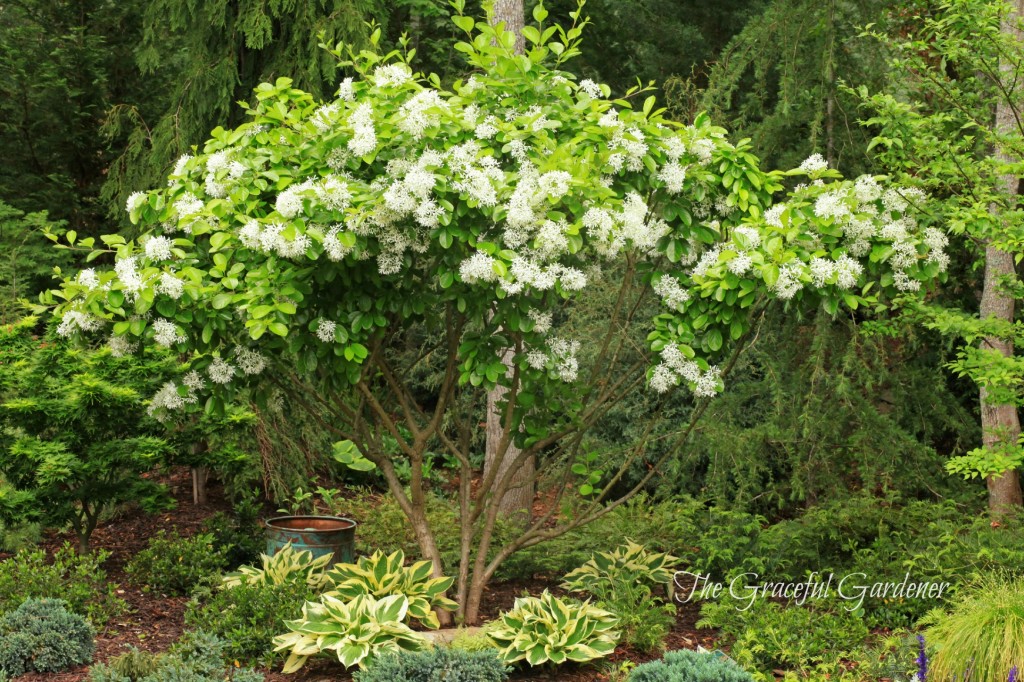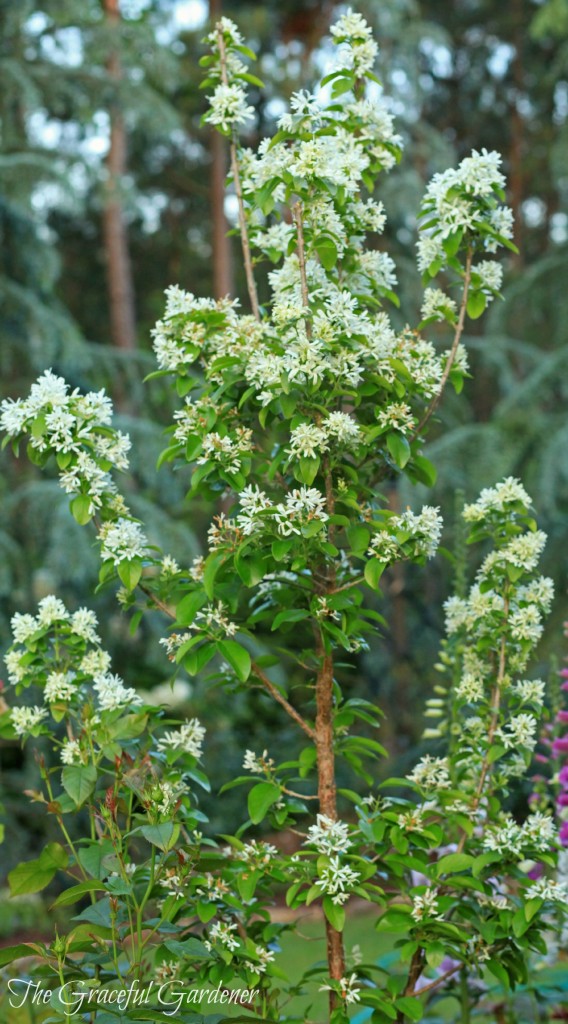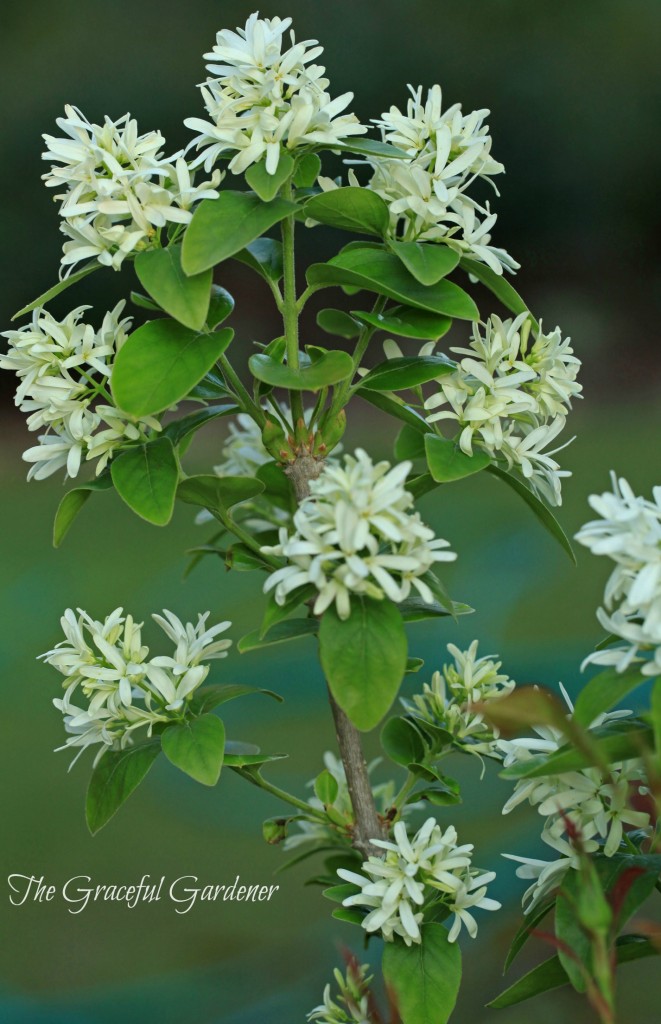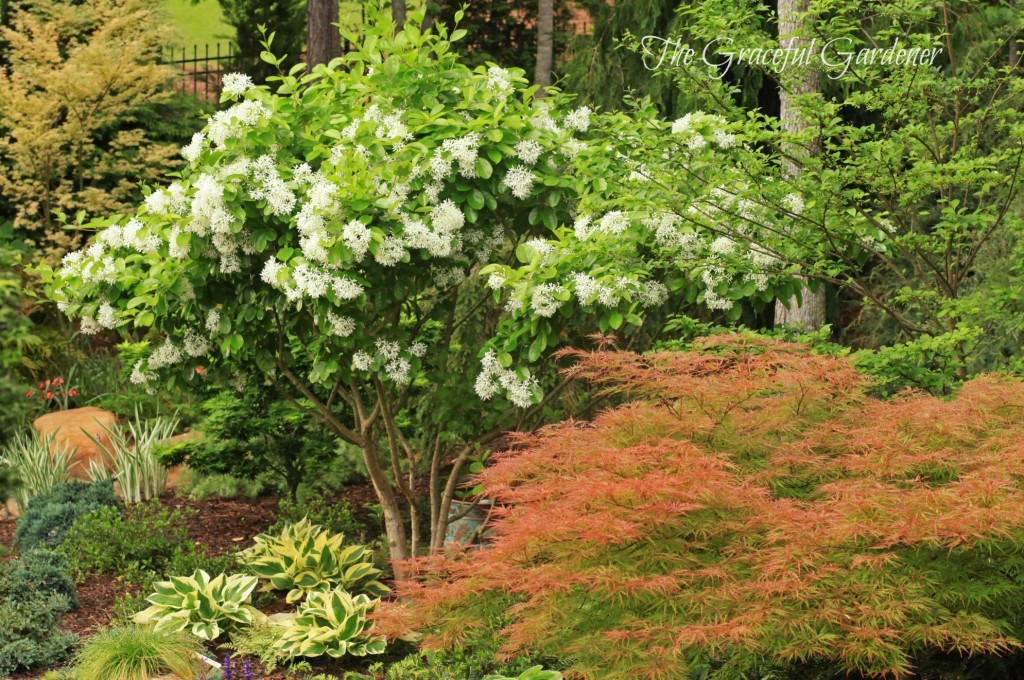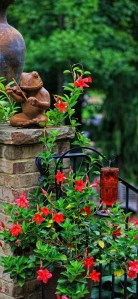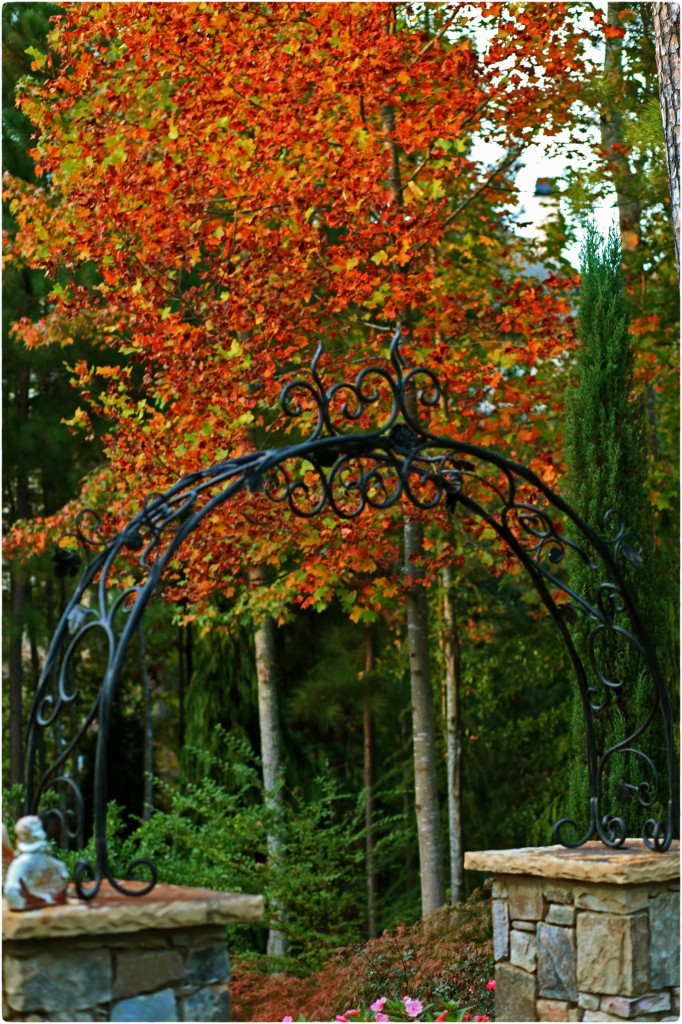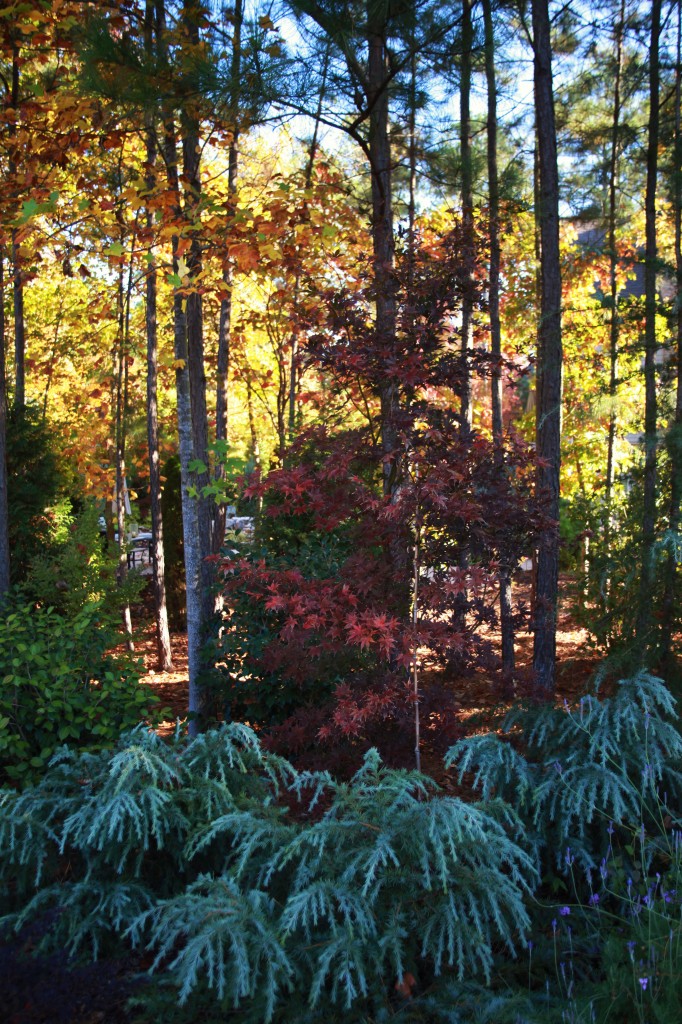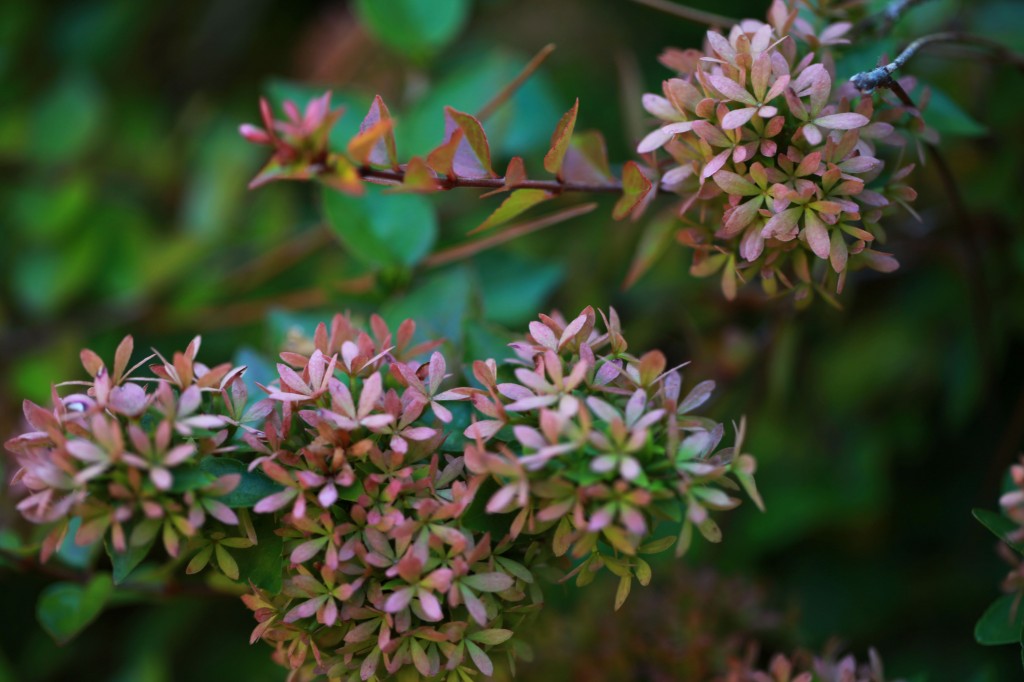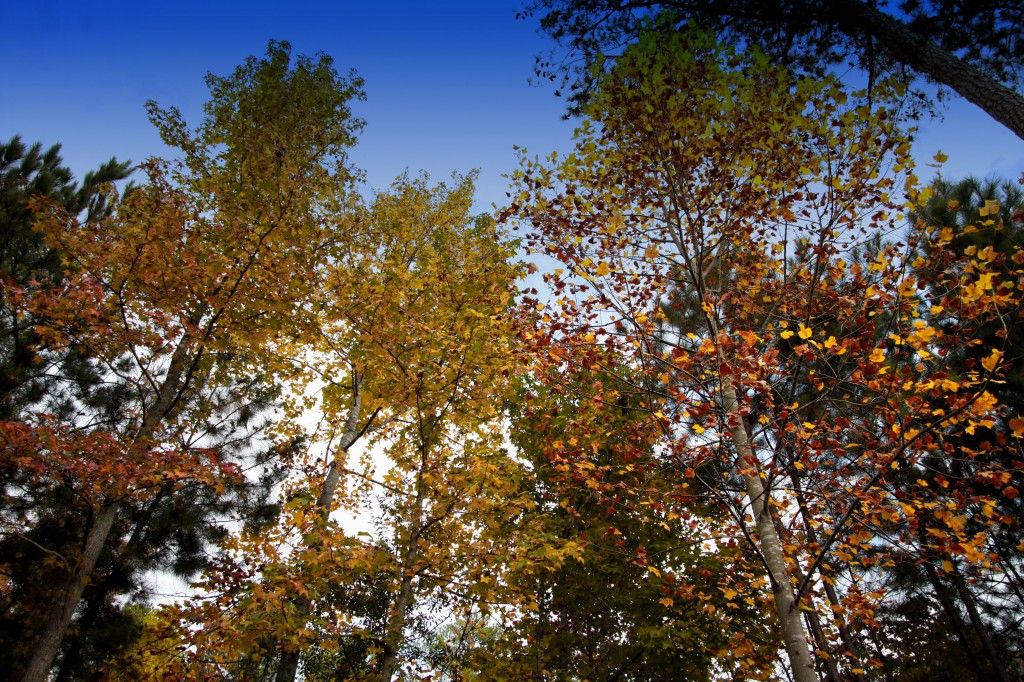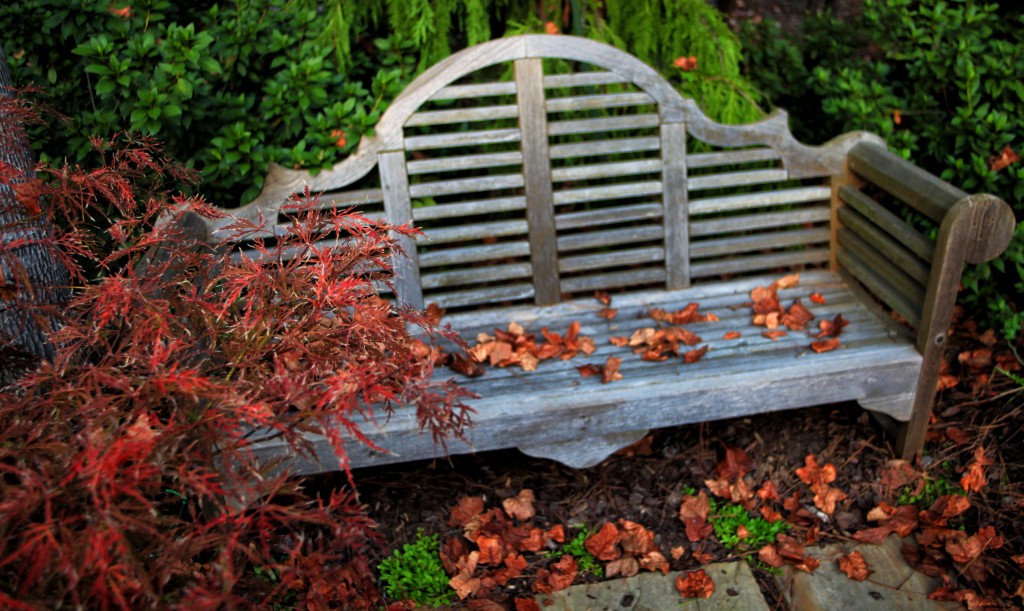Search Results for: hydrangea
Glorious Hydrangeas in my garden…
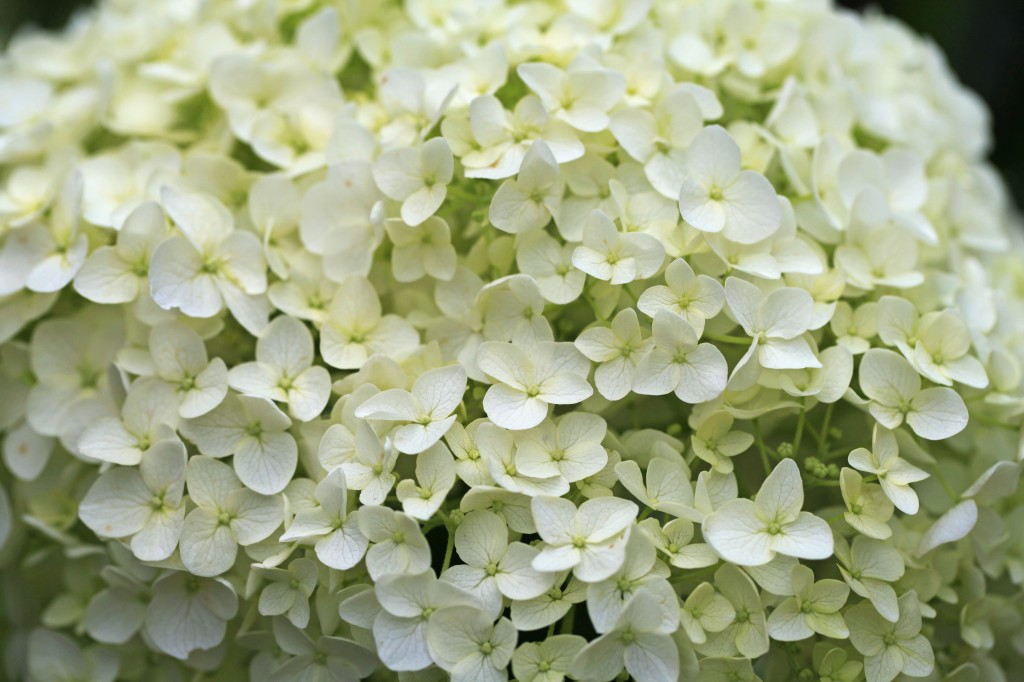
My Glorious Hydrangeas
Recently, there’s been a glorious explosion of hydrangea flowers in my garden. This month my hydrangeas (along with my roses) have taken center stage.
I grow several varieties in my garden which is a small collection of about 40 Hydrangeas.
Hydrangea arborescens:
‘Annabelle’

The blooms of ‘Annabelle’ are absolutely huge in my garden. Some are nearly 12 inches across.
‘Annabelle‘ has big balls of flowers that start out green, then turn to white and eventually dry a pale green as the season progresses. The flowers are lacy and delicate, but don’t let that fool you, this plant is tough. Mine are massed in a bed around my fountain.
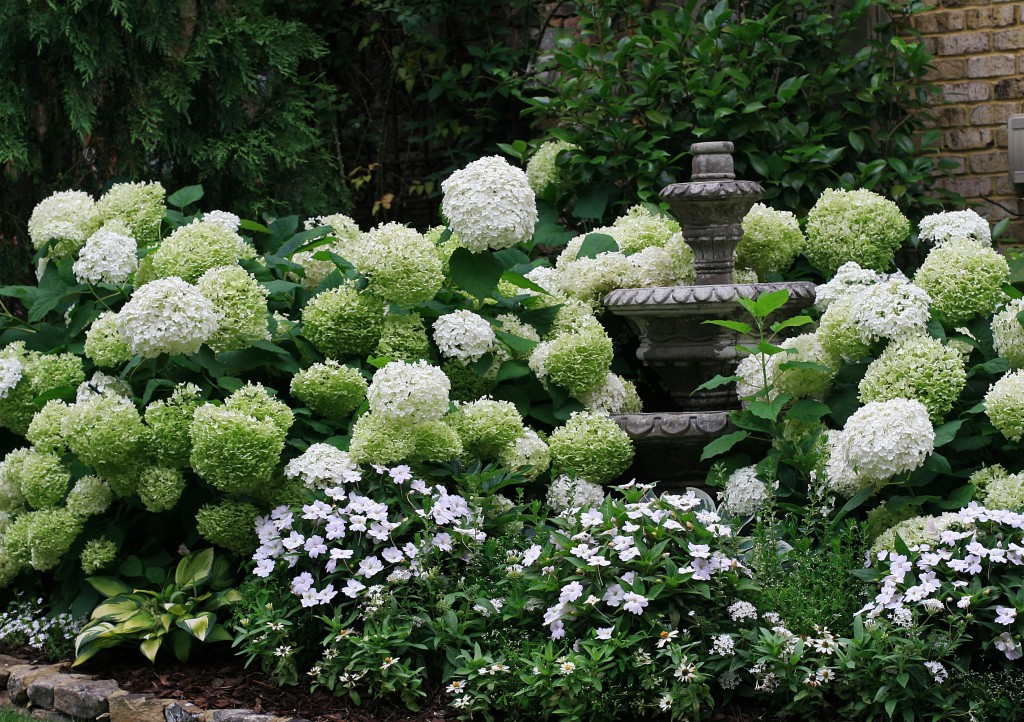
Hydrangea macrophylla:
‘Alpengluhen’ (Glowing Embers)
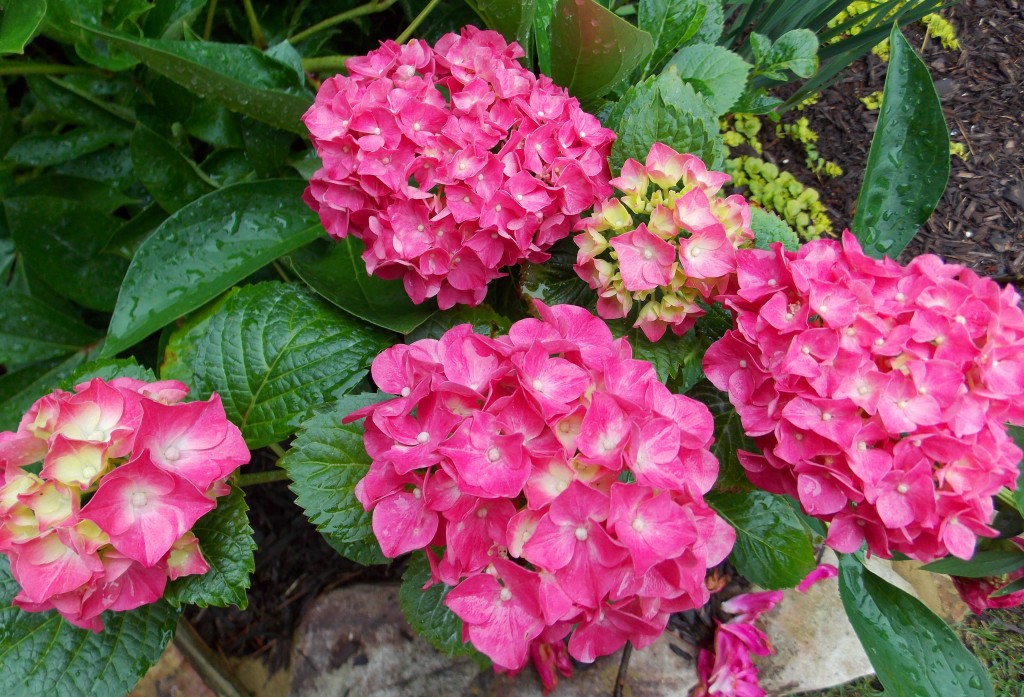
‘Alpengluhen’- (Glowing Embers) is a new addition to my hydrangea collection this year. A compact 3′ tall hydrangea with beautiful pinkish-red flowers.
‘Endless Summer’ and ‘Big Daddy’
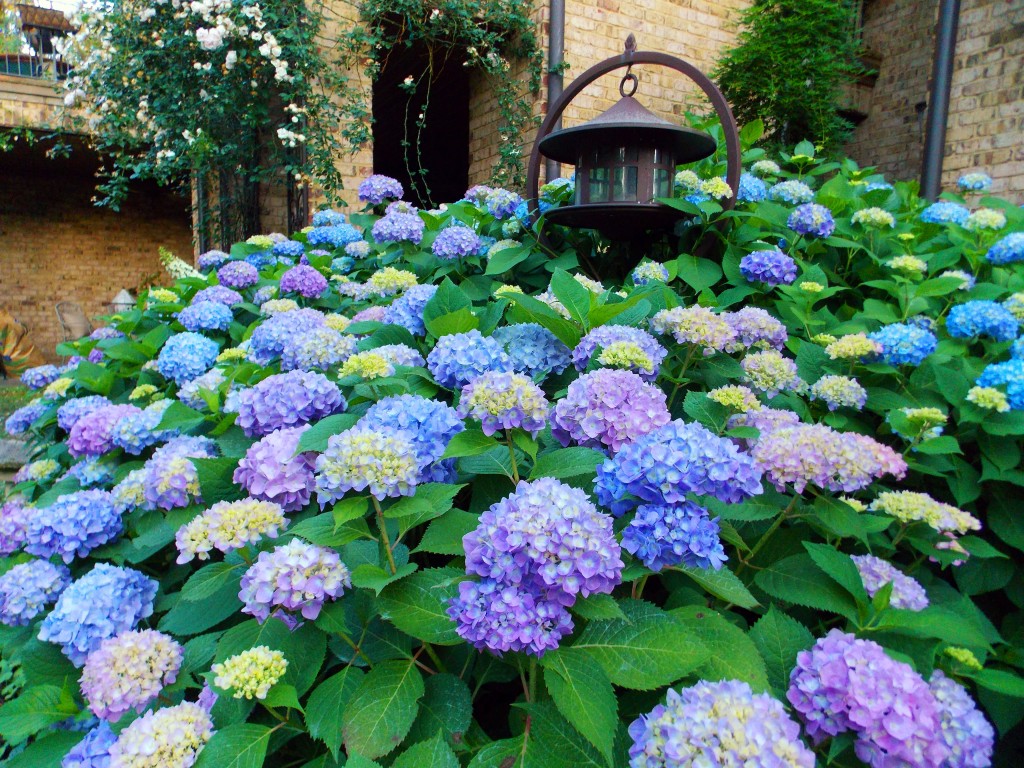
My Endless Summer are planted in my backyard amongst a few other hydrangeas, ‘Big Daddy‘ and ‘Snowflake’ . What a spectacular show of blooms they put on every year.
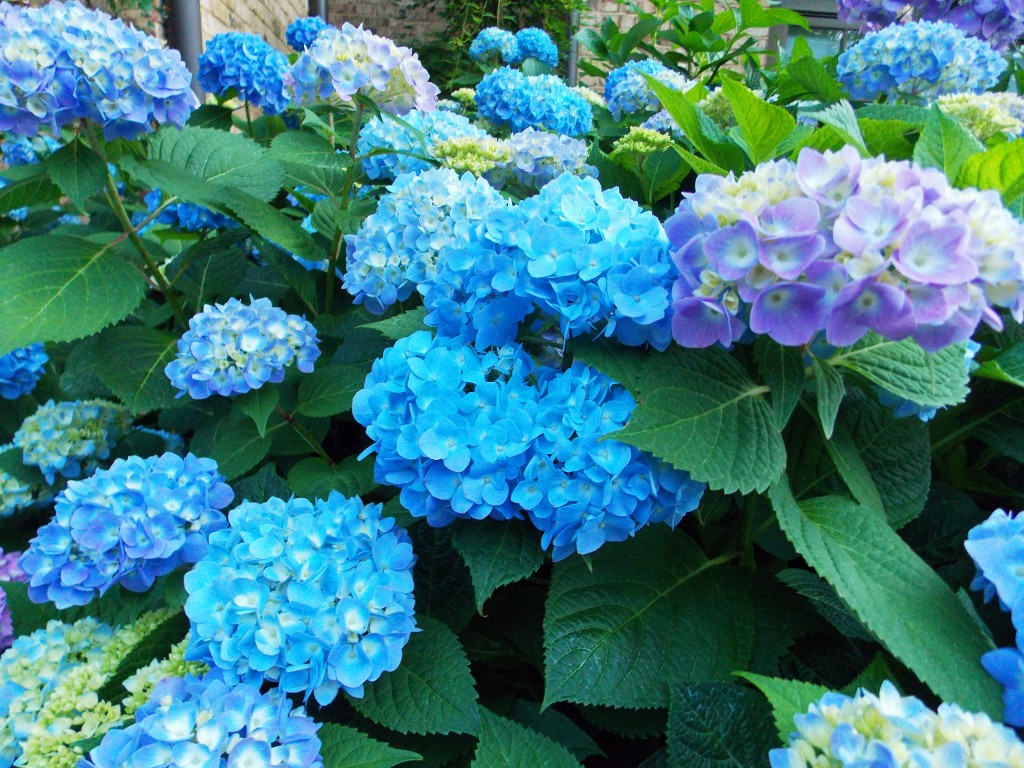
‘Endless Summer’ is a very hardy hydrangea and blooms on both the current season’s growth as well as old growth, providing the advantage of a longer bloom period.
‘Big Daddy’, another H. macrophylla, has giant flower heads a foot across or more.
Endless Summer ‘Blushing Bride’
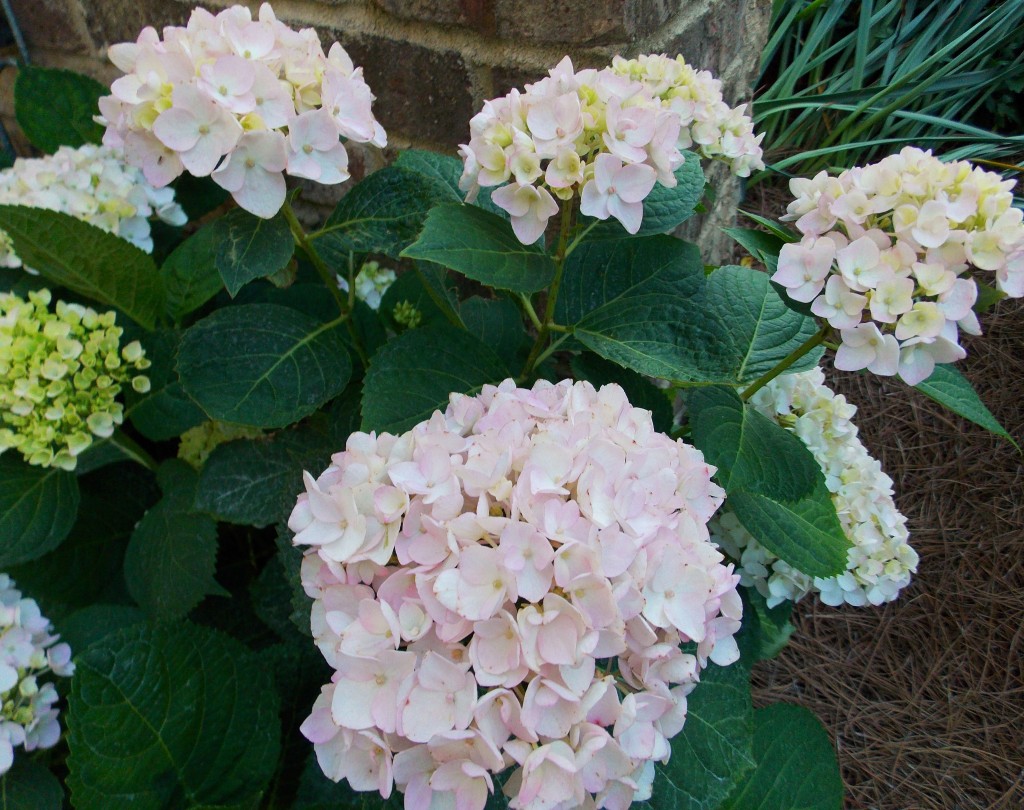
Endless Summer ‘Blushing Bride‘ produces blooms throughout the season on both new and old stems. Huge blooms start out pure white and become more of an antique pink as they fade. I have several planted with H. macrophylla ”Mariesii Variegata’. ‘Blushing Bride‘ is very lovely…
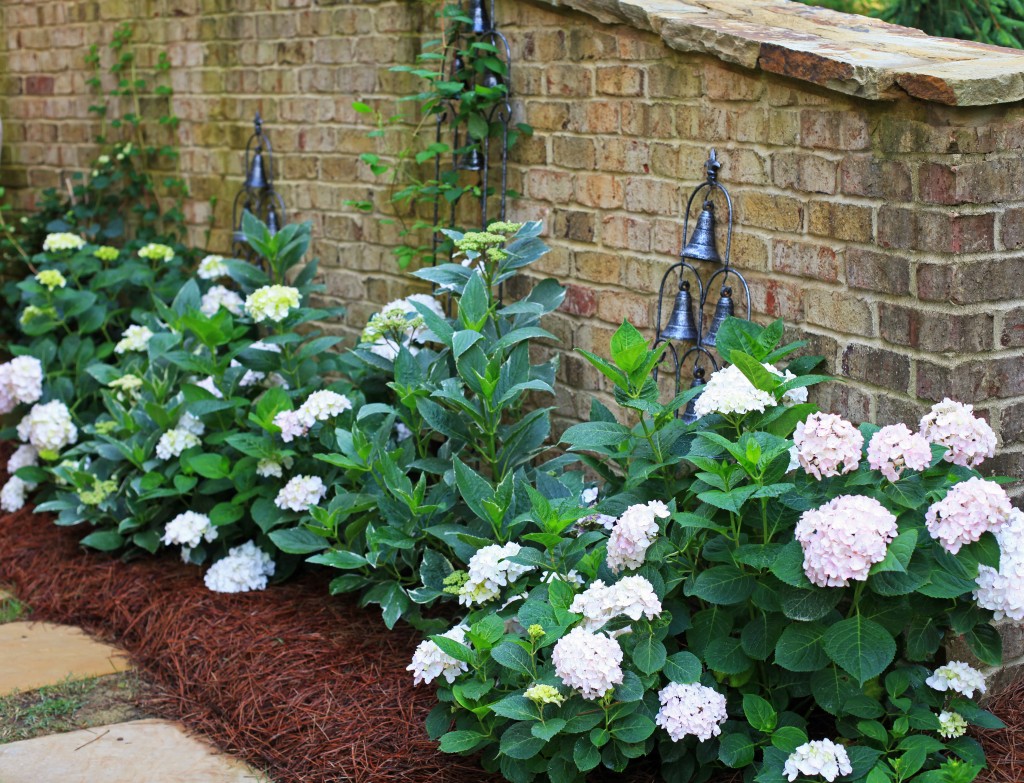
H. Macrophylla ‘Mariesii Variegata‘-LaceCap
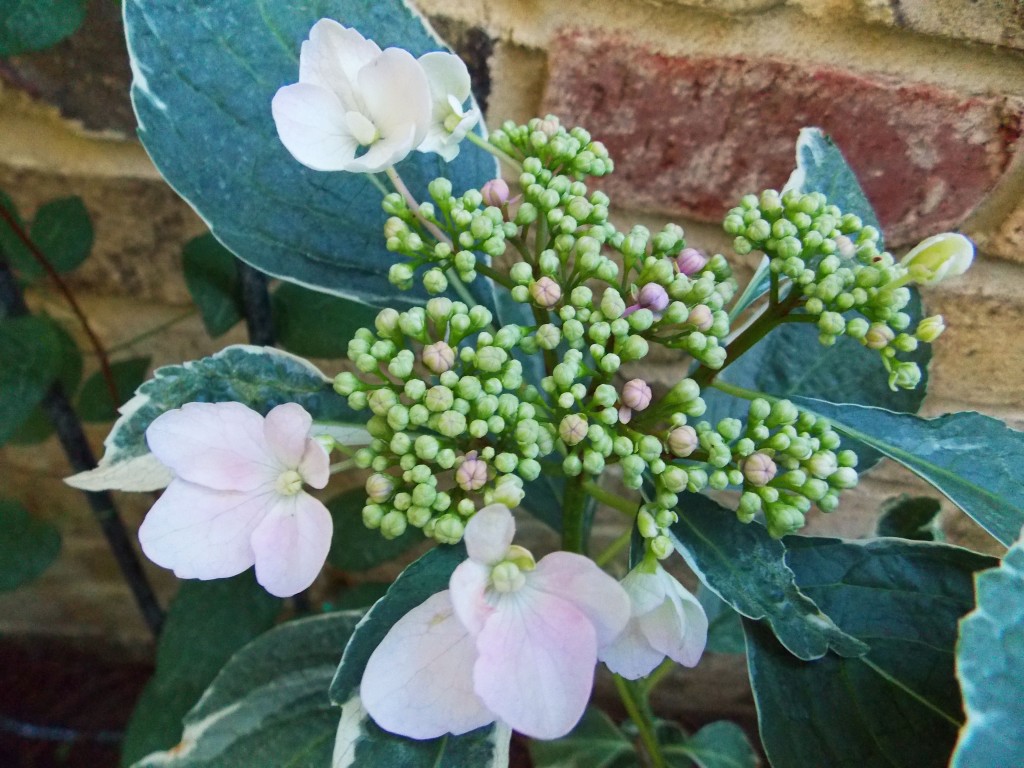
This LaceCap ‘Mariesii Variegata’, I must admit was a bit cold sensitive for my Zone 7b climate. The first two I ever planted, died the following year after an usually cold winter. Two years ago, I planted two more in a more sheltered location and am hoping they will survive. So far so good. The leaves are green with white margins and flowers either pink or blue lacecap blossoms.
H. macrophylla ‘ Blue Wave‘-LaceCap and ‘Nikko Blue‘
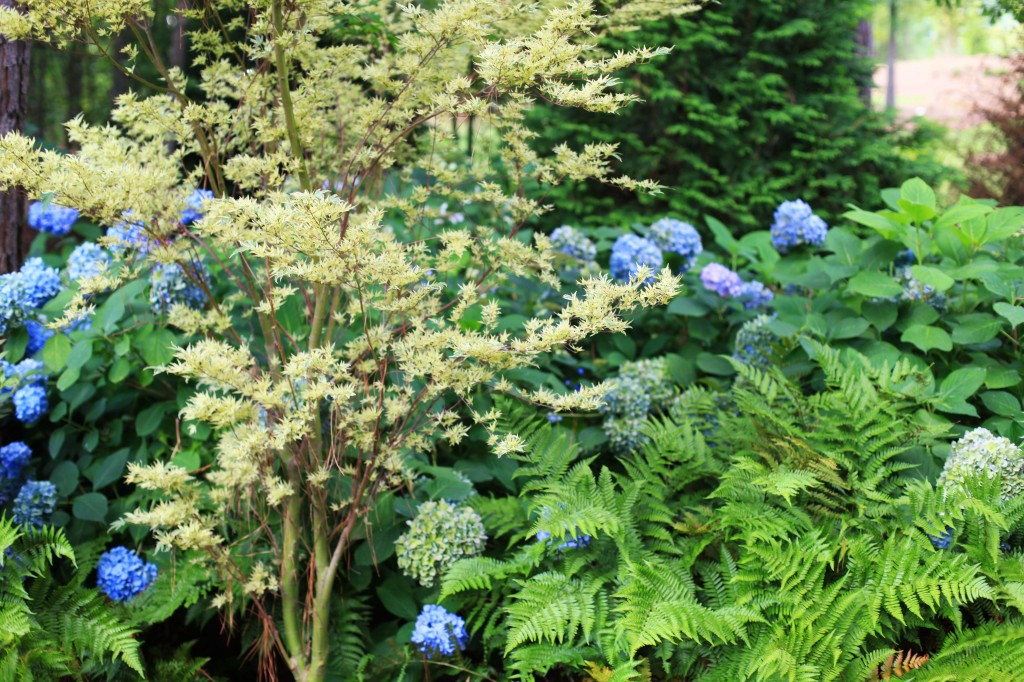
Many of my Hydrangeas are inter-planted with Japanese Maples and ferns in my backyard garden. I love this combination, especially with my ‘Blue Wave’ and ‘Nikko Blue’ hydrangeas.
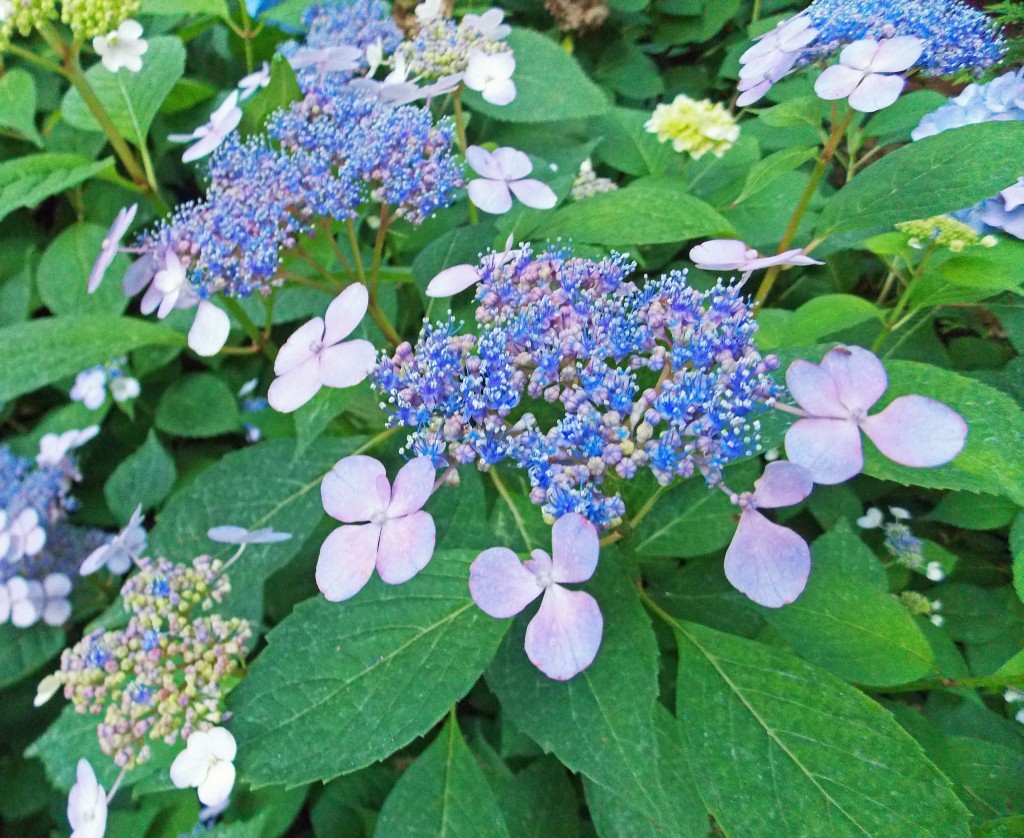
H. macrophylla, ‘Blue Wave‘ happens to be my favorite LaceCap hydrangea in my garden. A glorious sight when in bloom.The Lacecap flowers are a captivating blue that I love to photograph. Mine are planted in light shade under pine trees receiving late morning /early afternoon dappled sun and are thriving. Beautiful!
Hydrangea quercifolia:
‘Snowflake’

Ok, if I had to pick a favorite hydrangea in my garden, it would be this one- H. quercifolia ‘Snowflake’.
This one is a stunner. “Snowflake’ has absolutely gorgeous clusters that are densely layered just dripping with showy white flowers. I have several planted with many of my H. macrophylla’s throughout my garden.
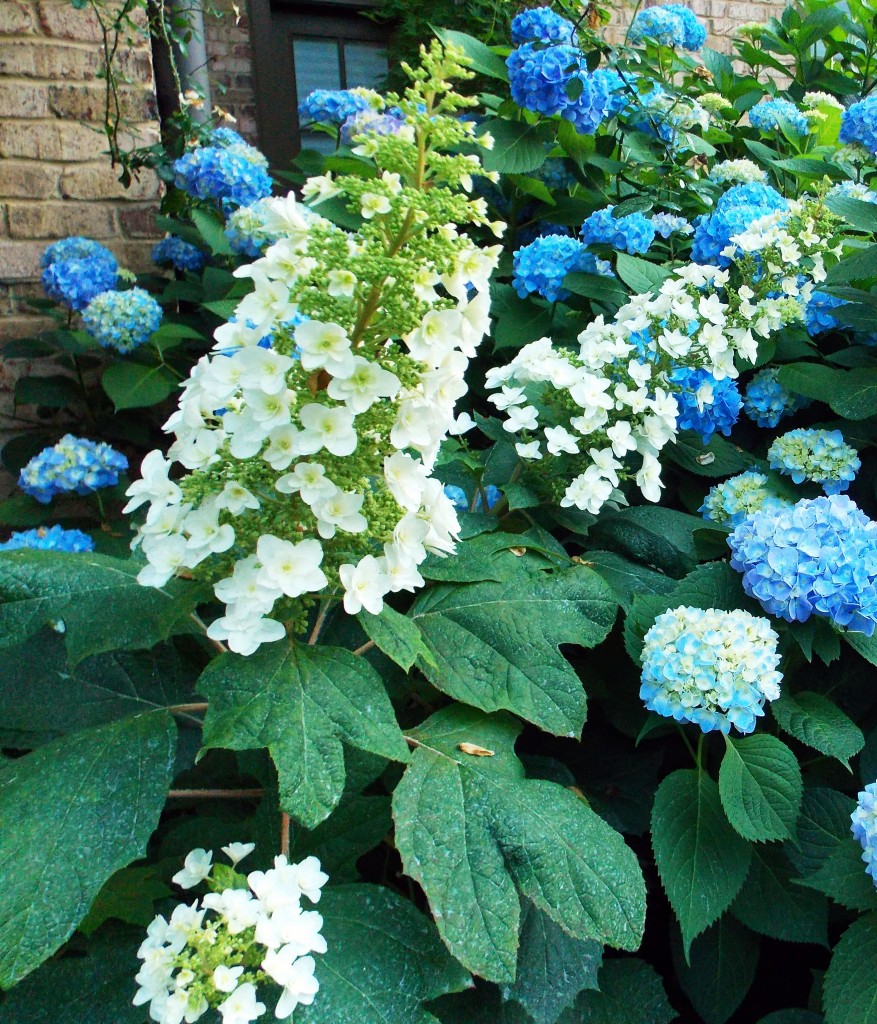
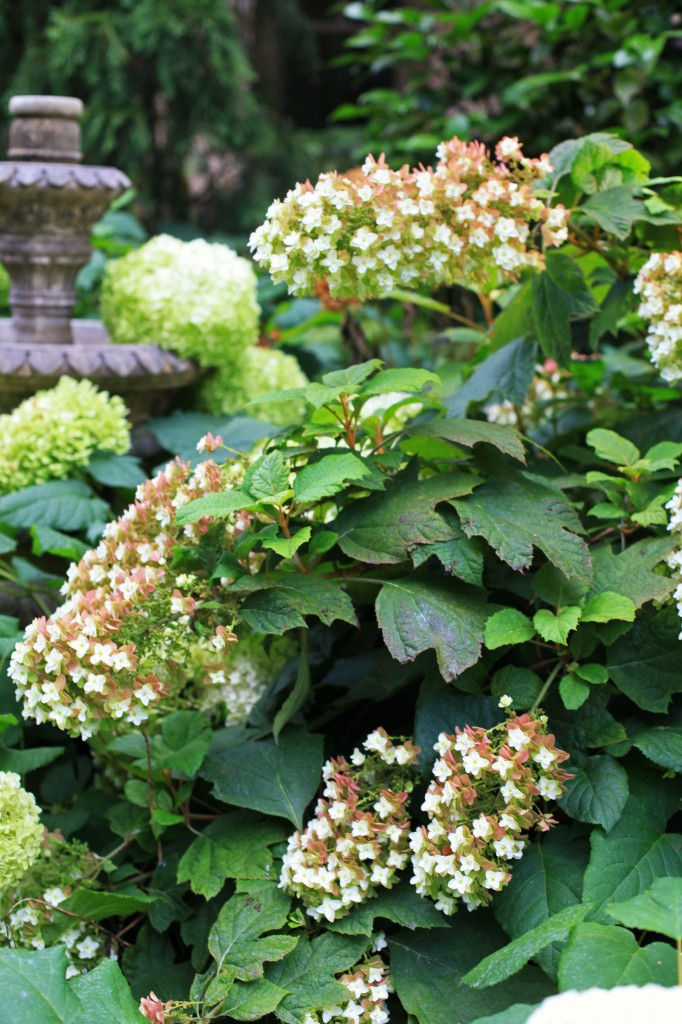

The flowers age beautifully and I love every stage throughout the season. Snowflakes flowers start out pure white, gradually fading to pink and then turning brown by late summer. I can’t say enough about this plant…
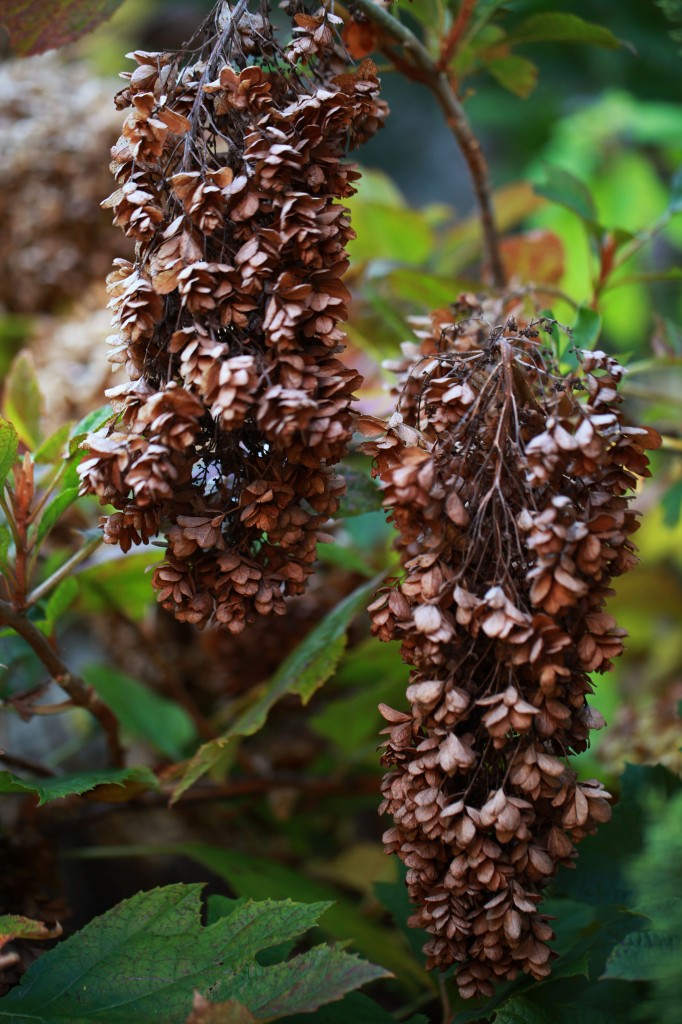
While these photo’s I’ve shared with you represent many of my hydrangeas, there are some however that were camera shy…here’s a list of a few others that are gracing my garden..
Arborecens ‘Radiata”
H. macrophylla ‘Painter’s Palette’
H. macrophylla ‘Fuji Waterfall’
H. paniculata ‘Vanilla Strawberry’
H. paniculata (PeeGee) ‘Tree Form
Some Hydrangea links:
http://www.hydrangeashydrangeas.com
Creating Spring Color and Texture With Conifers and Japanese Maples….in my garden…
I’m all about color. In my garden that is. Anyone who has visited my garden knows that between all the roses, hydrangeas, peonies, bulbs, perennials, and annuals that color always makes a statement every spring and summer in my garden. However, for the last several years my spring garden has been displaying a different type of explosion of color and texture — one that involves an obsession of mine– collecting conifers and Japanese Maples. I have been avidly collecting both for over 6 years now and there seems to be no stopping me. That is until I run out of space which I am precariously approaching ( I garden on about one acre) and when that happens I’m convinced I’ll start redesigning my landscape to justify my need (obsession) for the latest cool new conifer or alluring Japanese maple.
One thing is for sure, this obsession of mine gives me a spectacular display of color and texture and that is something I cherish each spring….
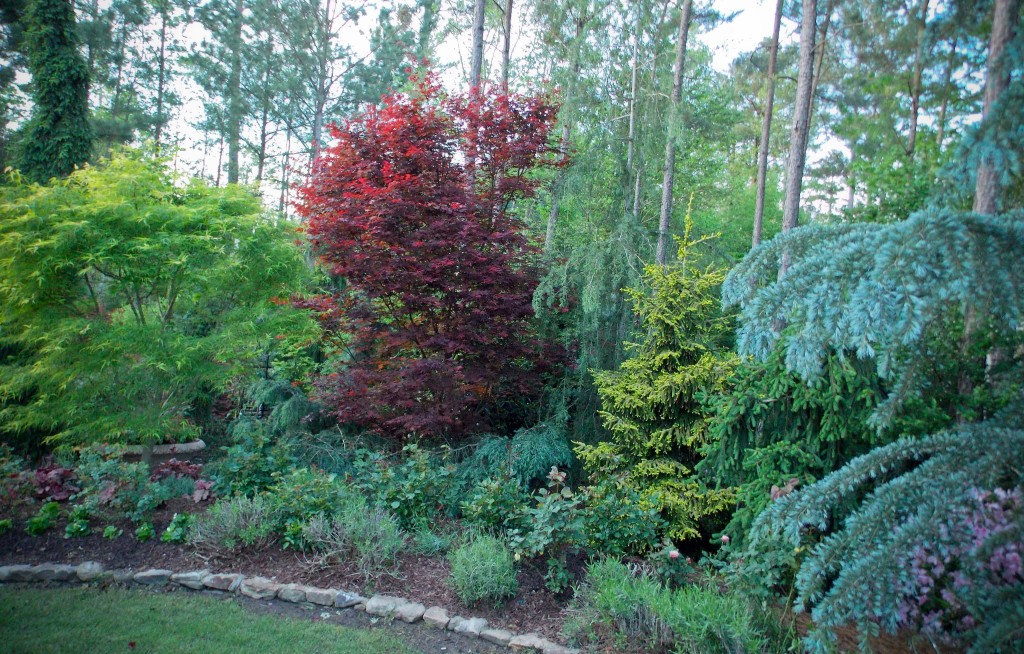

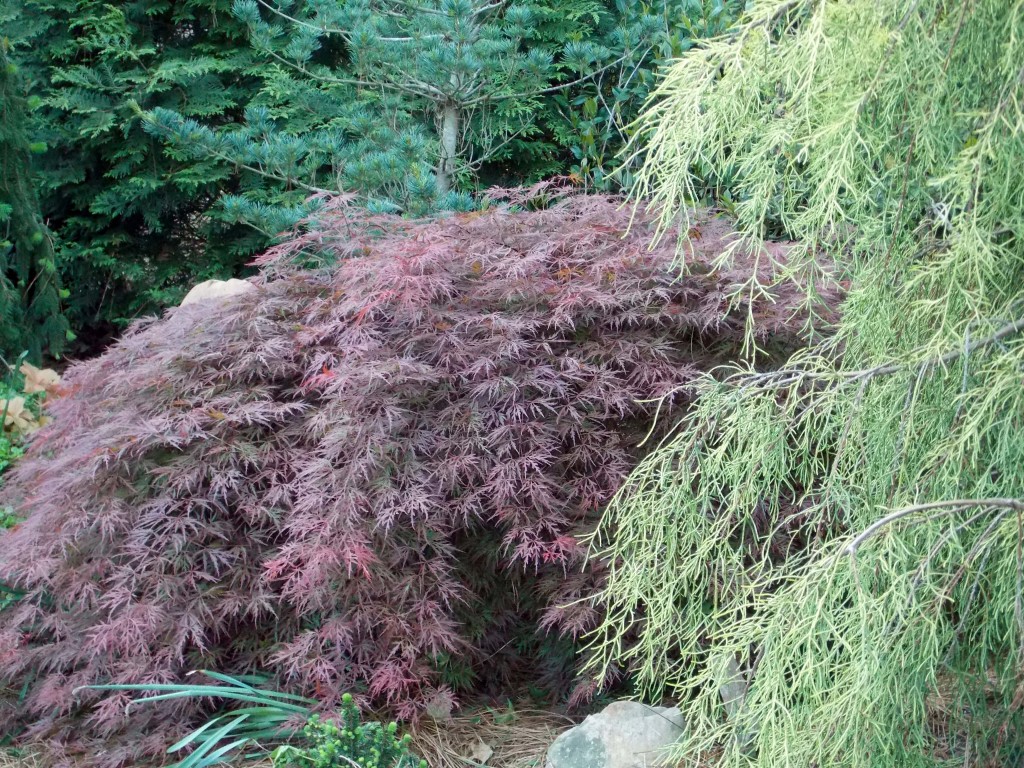


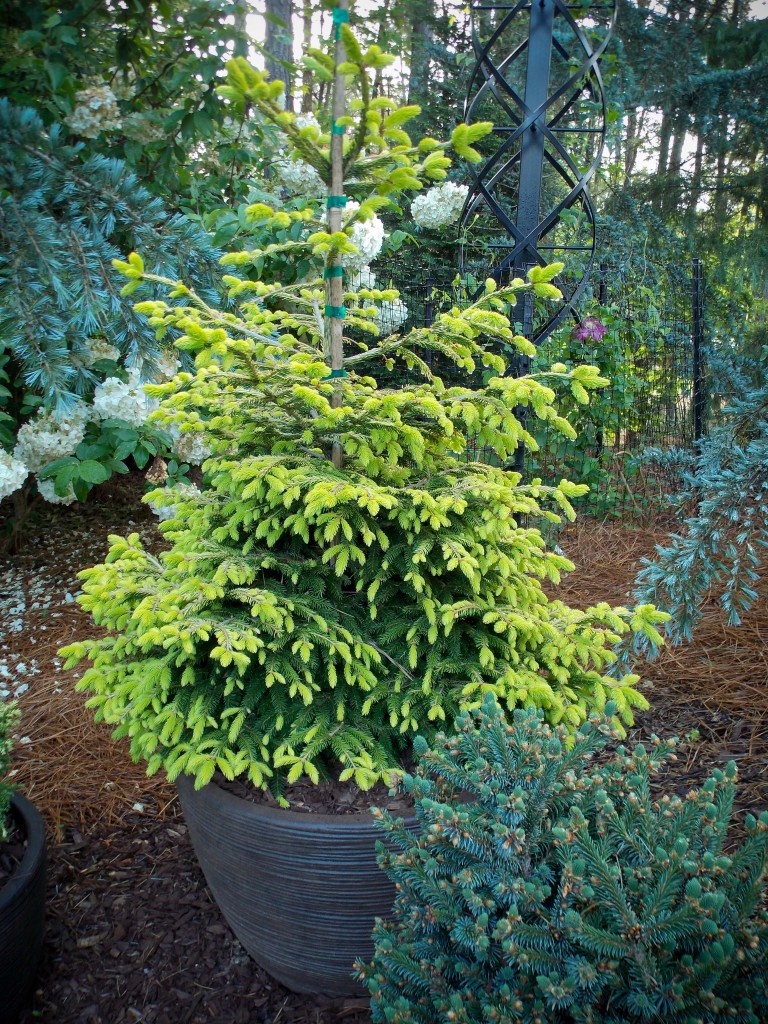
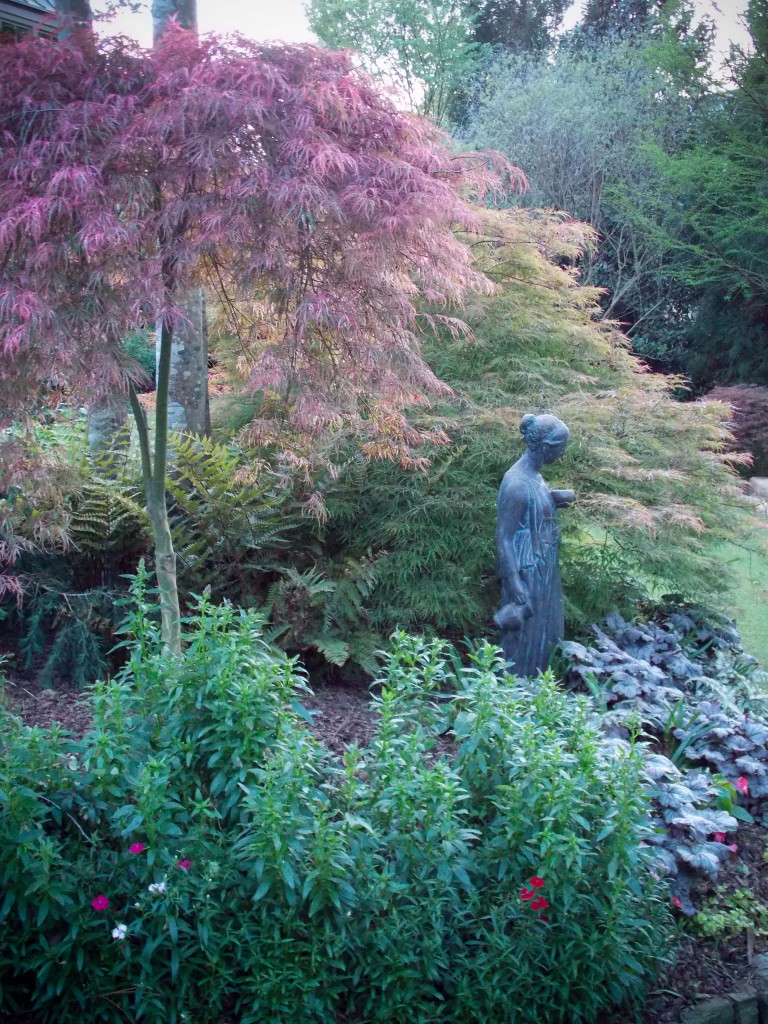
For short video of the conifers and JapMaples in my garden click here: https://www.facebook.com/TheGracefulGardener/videos/898986936789709/
Summertime In My Garden…The Graceful Gardener’s Containers…2013
Even though I’m quite late in posting this, I still wanted to share some of my containers with you this summer. I took many of these photo’s around the 4th of July, but to my surprise, many of my containers are still looking lush and full due to the unusual abundance of rain and lower temps we’ve experienced this summer (usually temps are in the mid-90’s this time of year), and of course, with the faithful application of Annie Haven’s Manure Tea.
Having designed and planted all my own containers for years, it’s truly still one of my favorite ways to be creative in the garden. This year I played around with lots of different colors and I even dabbled a bit in miniature container gardening this year.
Hope you enjoy the photo gallery of just a few of my containers…
Romantic white…
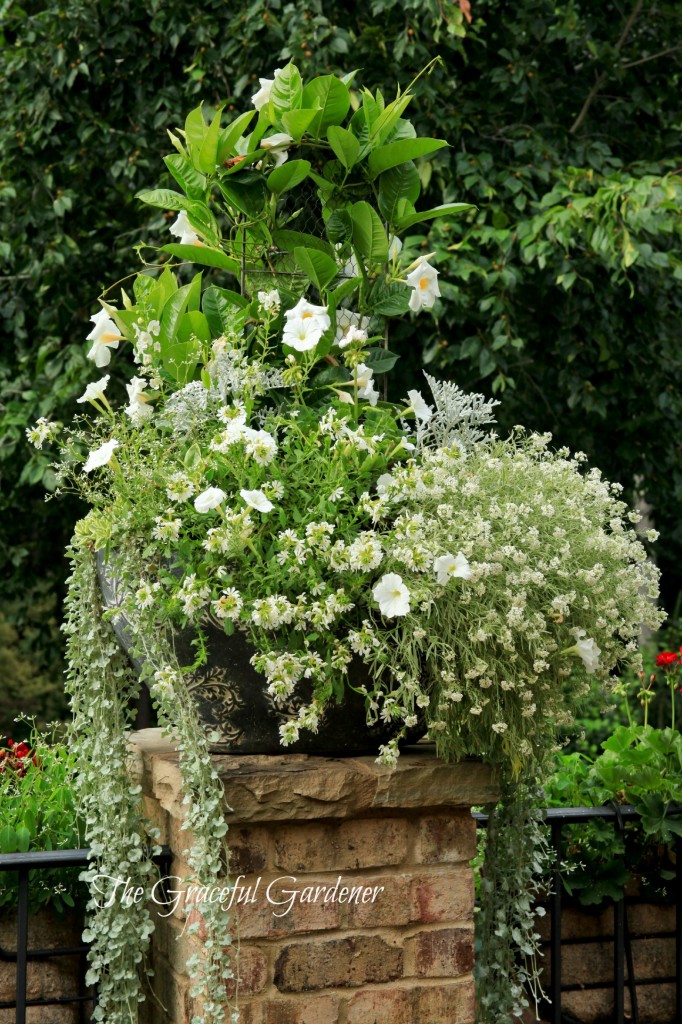
Burst of Orange…
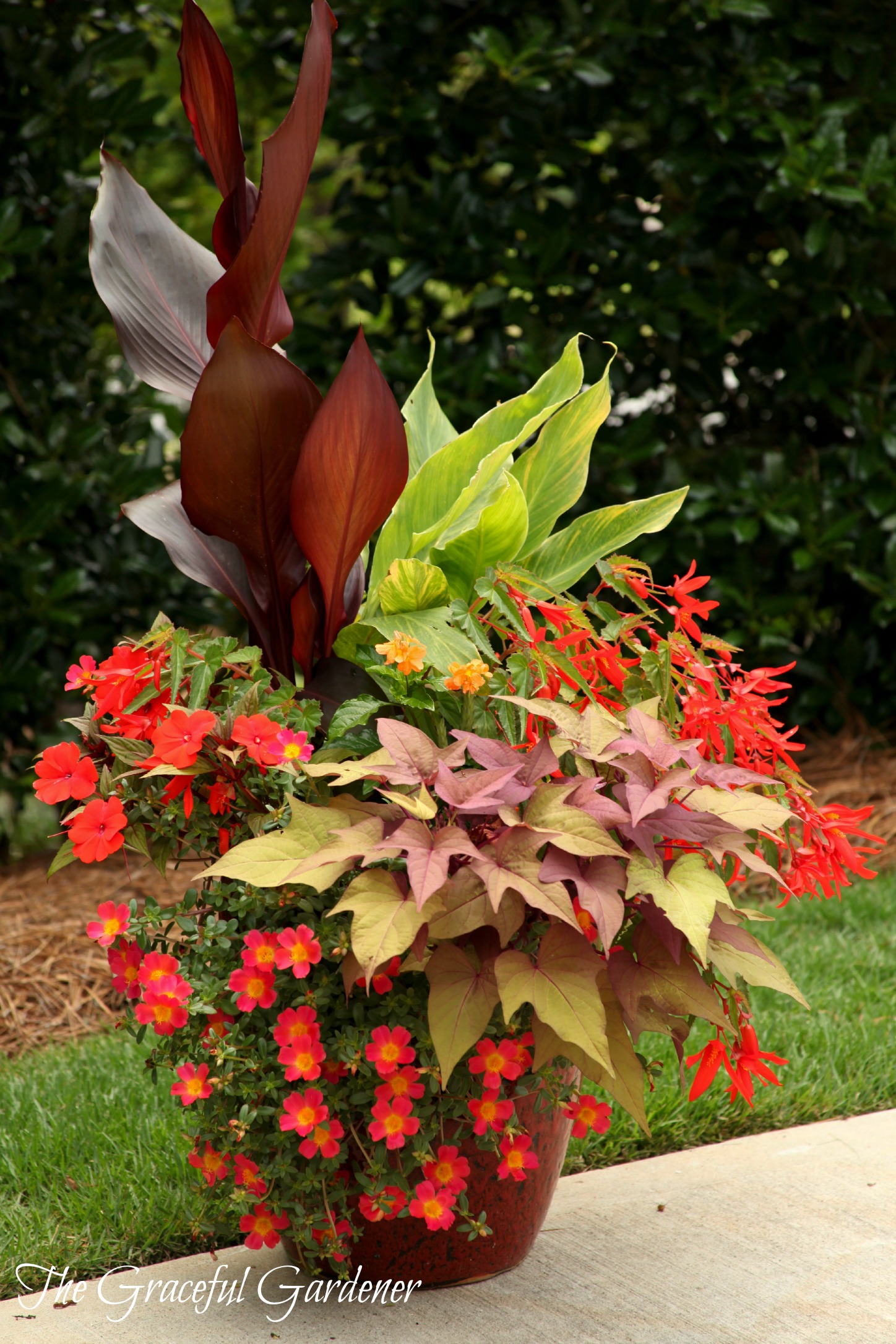
Nearly Black…
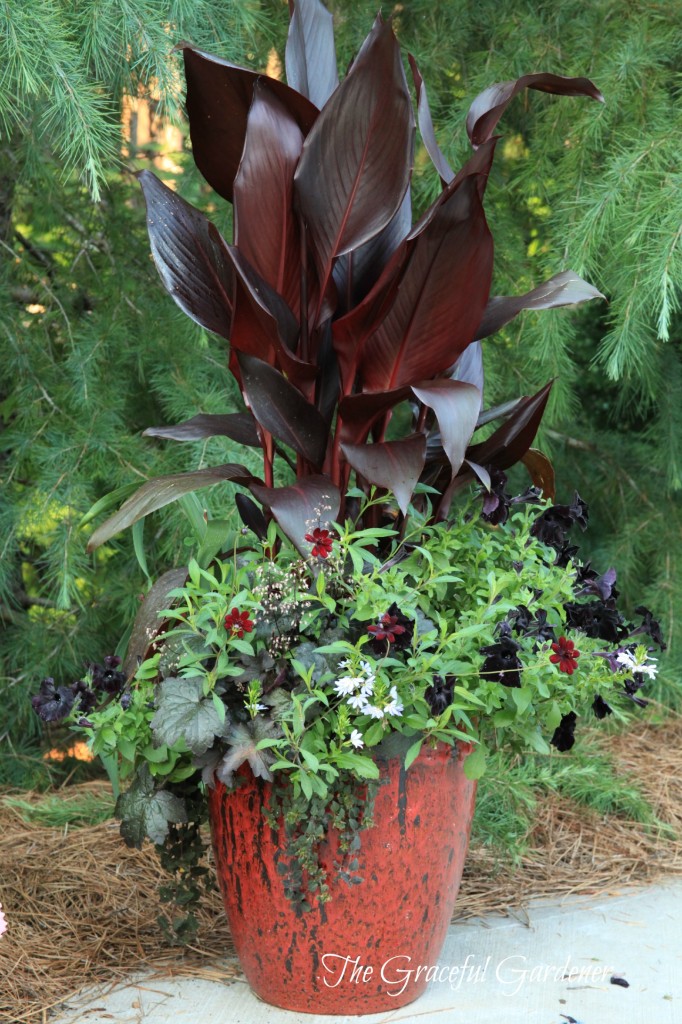
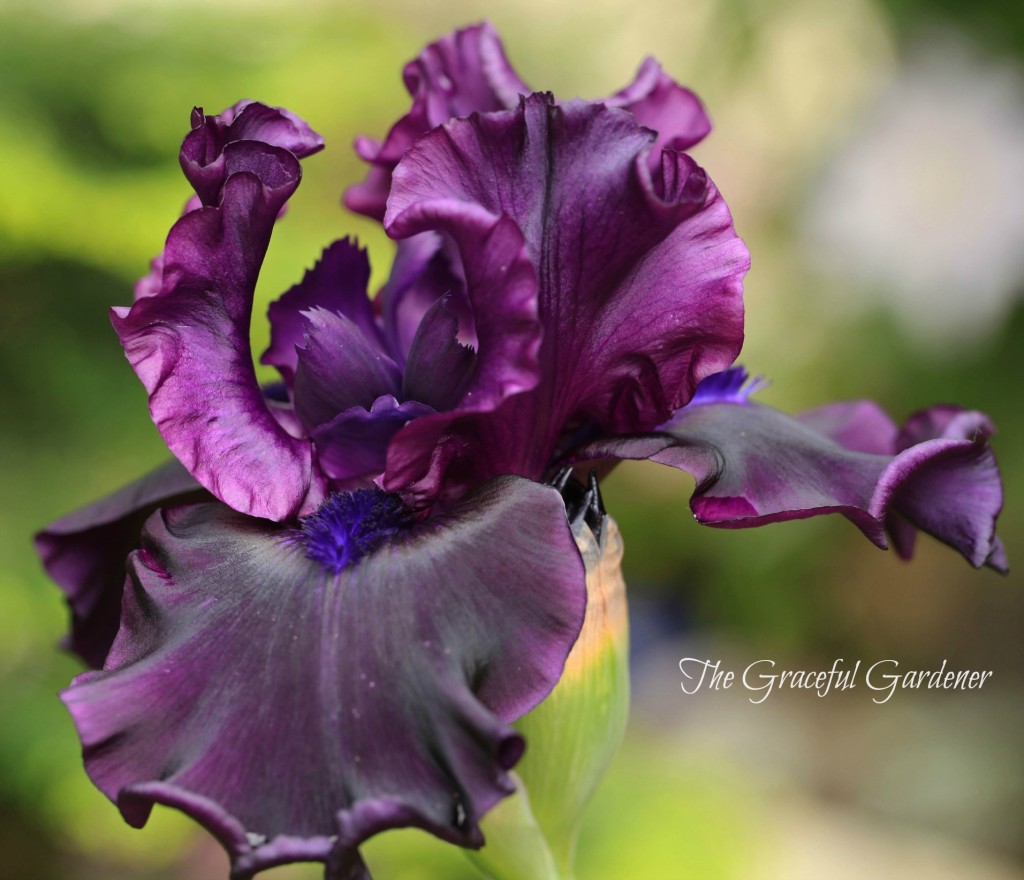
Succulent Fever…
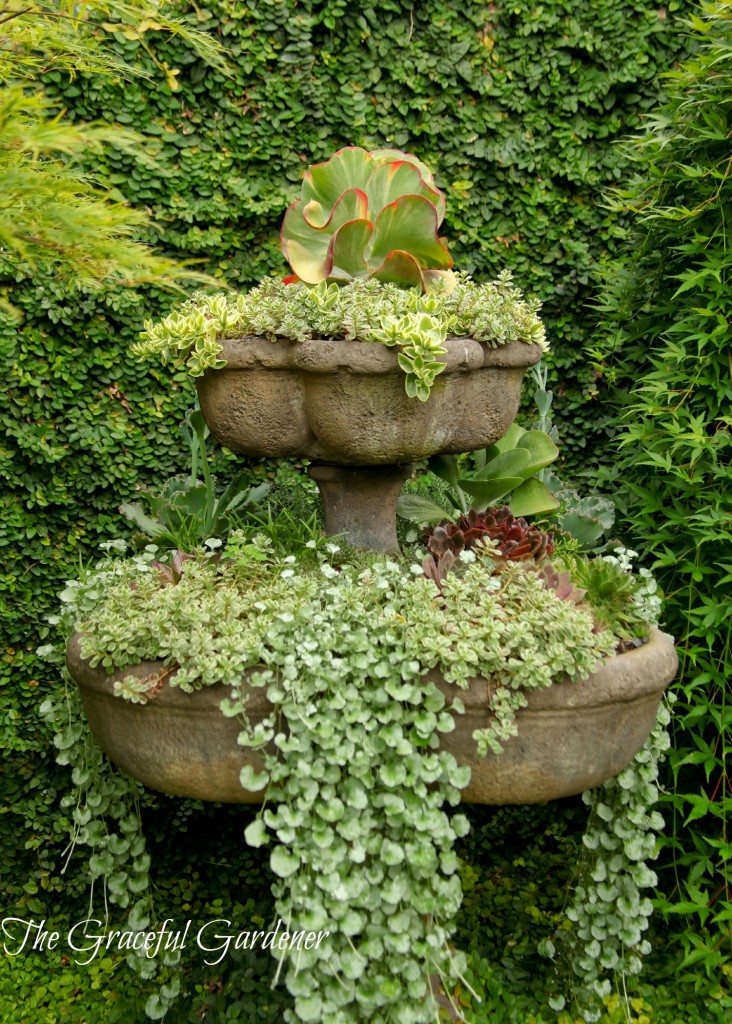
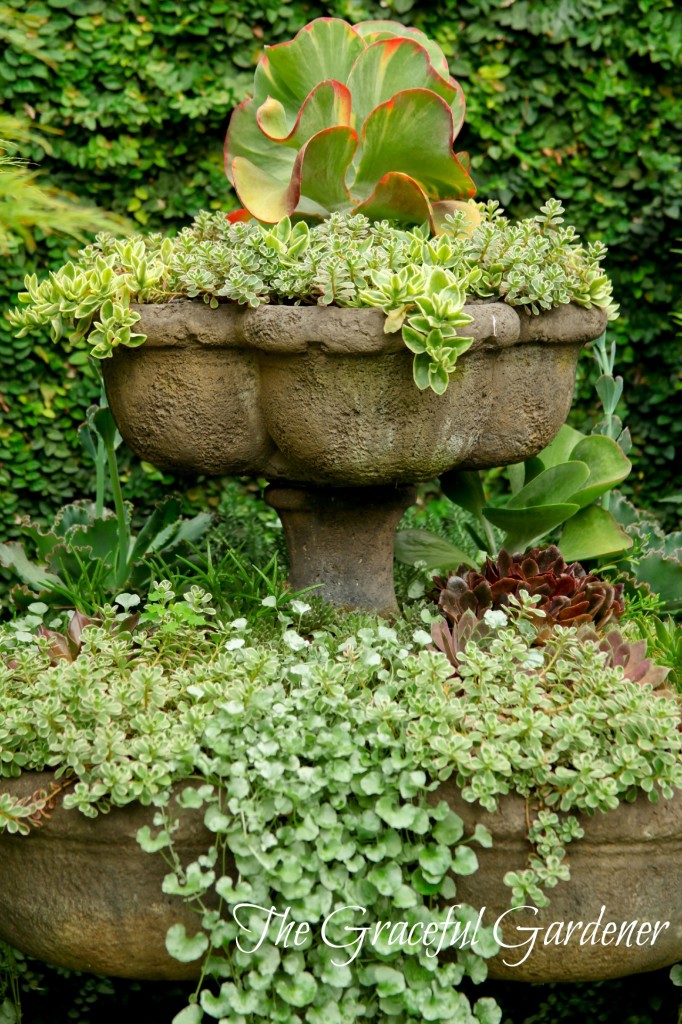
Cool Blues…
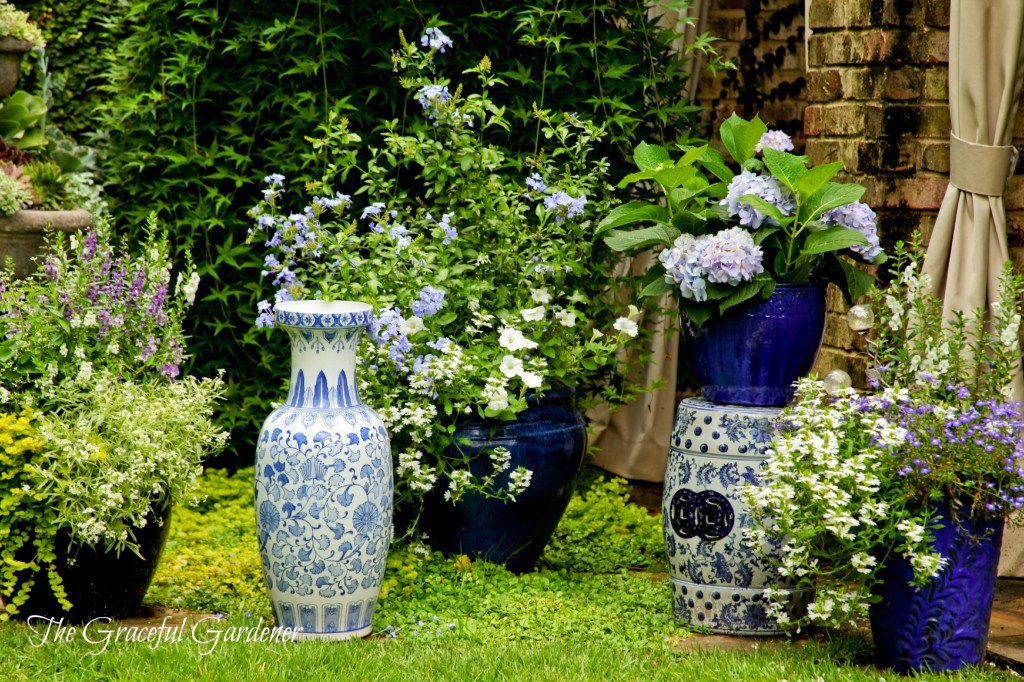
Succulent Basket…
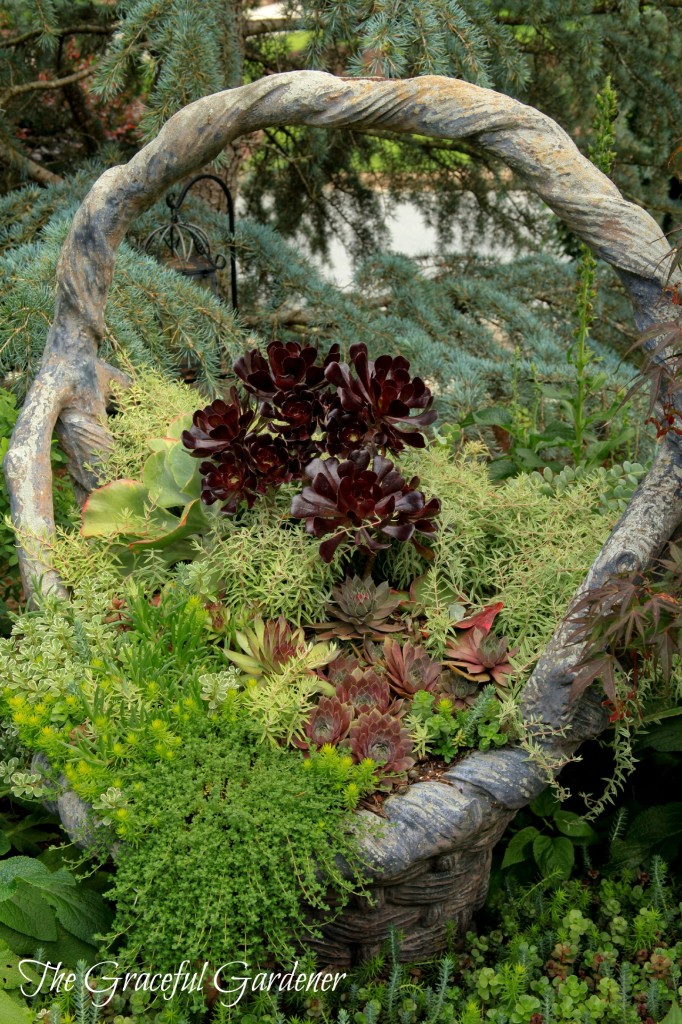
Ingredients: Assortment of succulents: Sedums, Echeveria, Sempervivums, Kalanchoe and my fav-‘Zwartkop’ aeonium.
Purple Vibes…
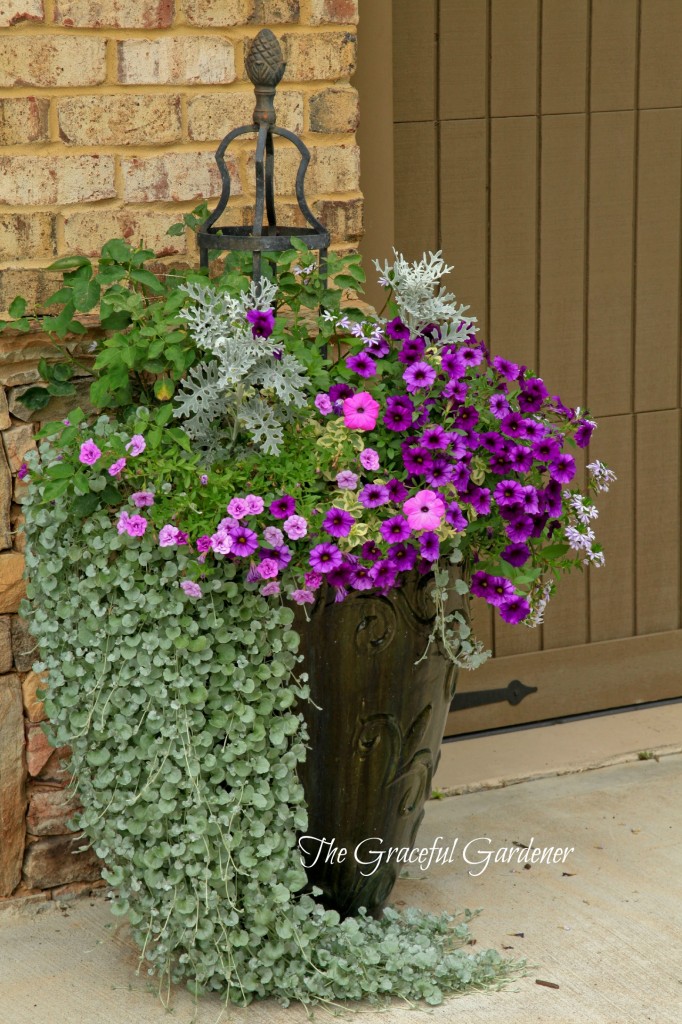

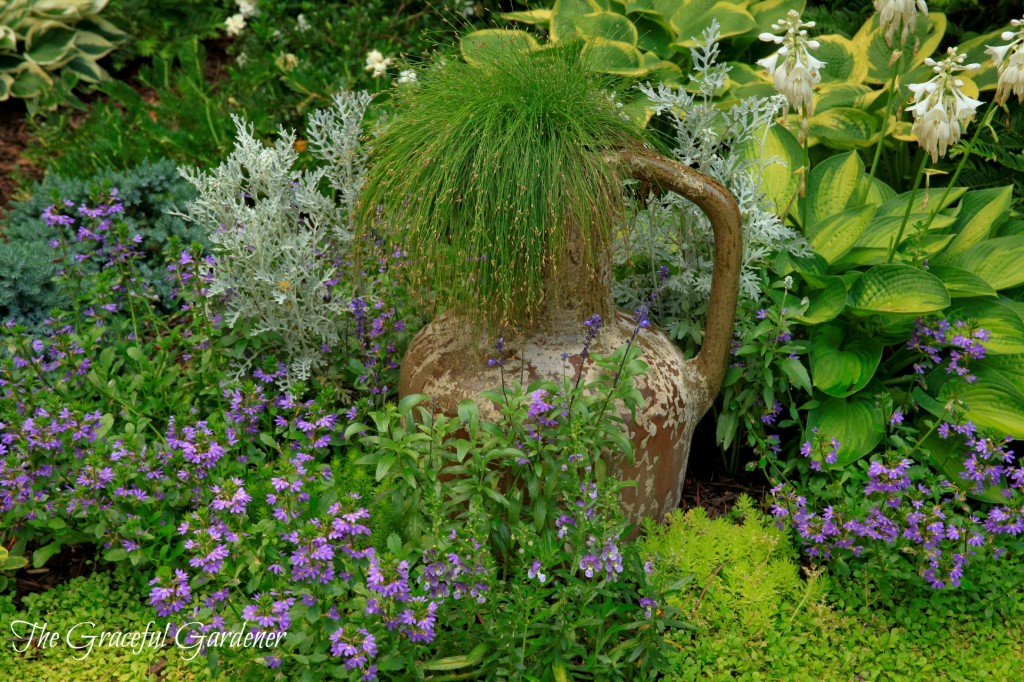
Peachy Planting…
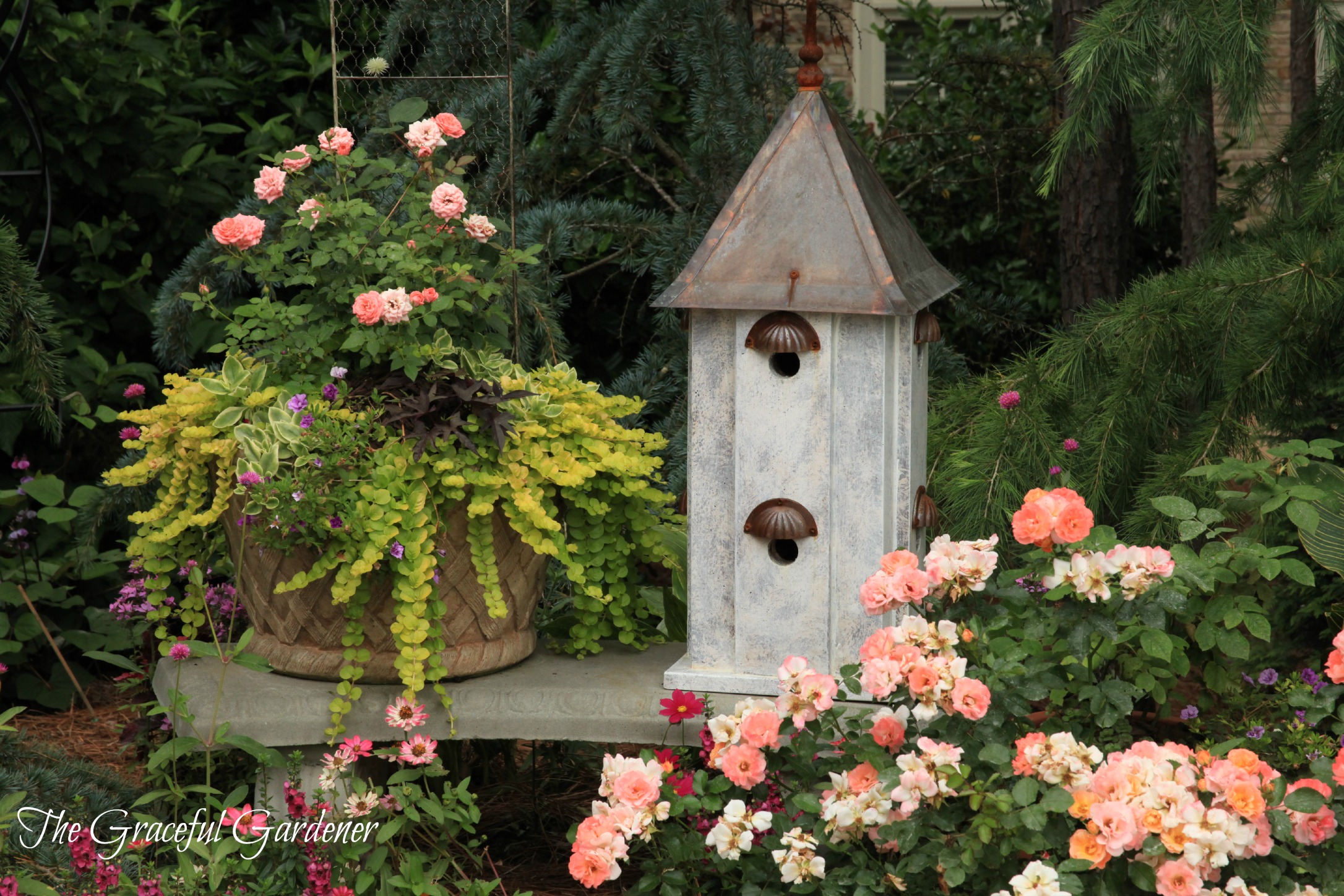
Moody Blues…
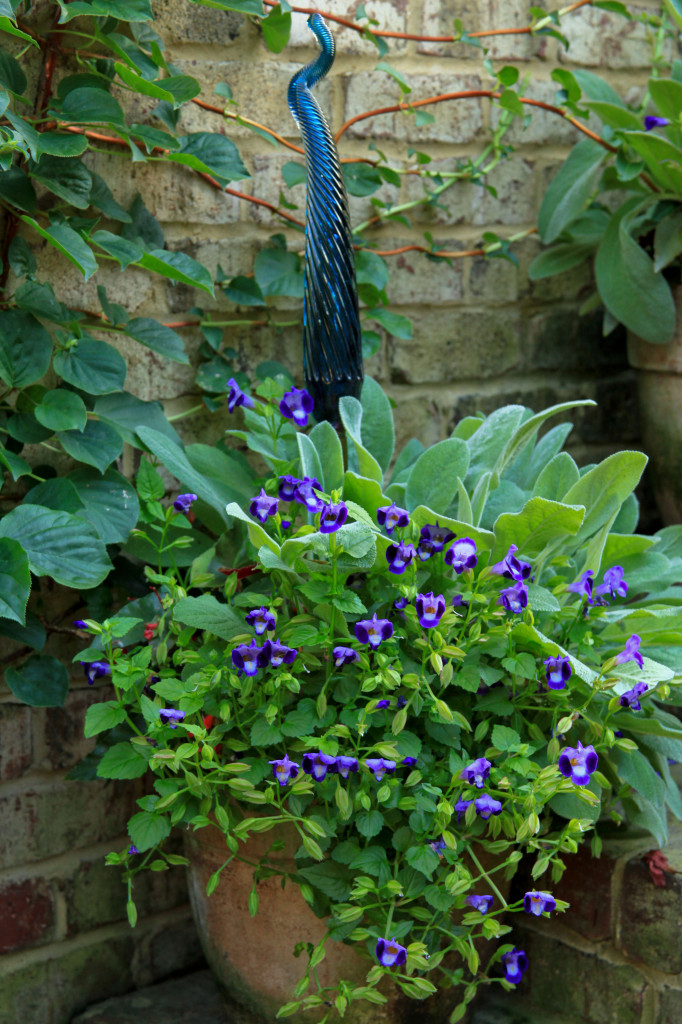
Variegated Foliage…
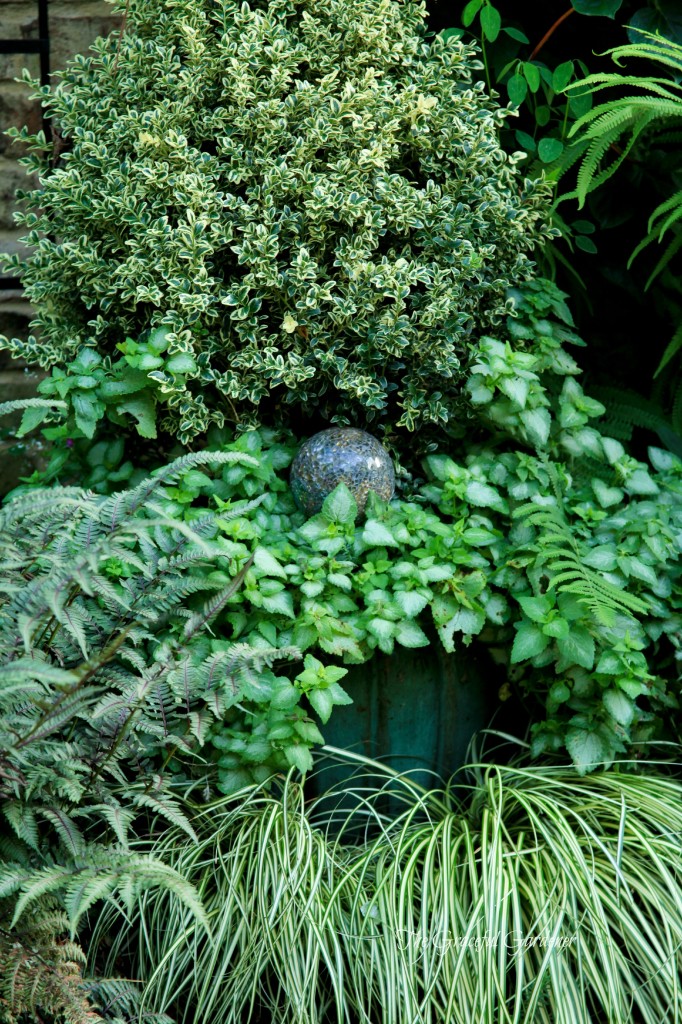
I gave miniature gardening a try this year and love it! So fun …
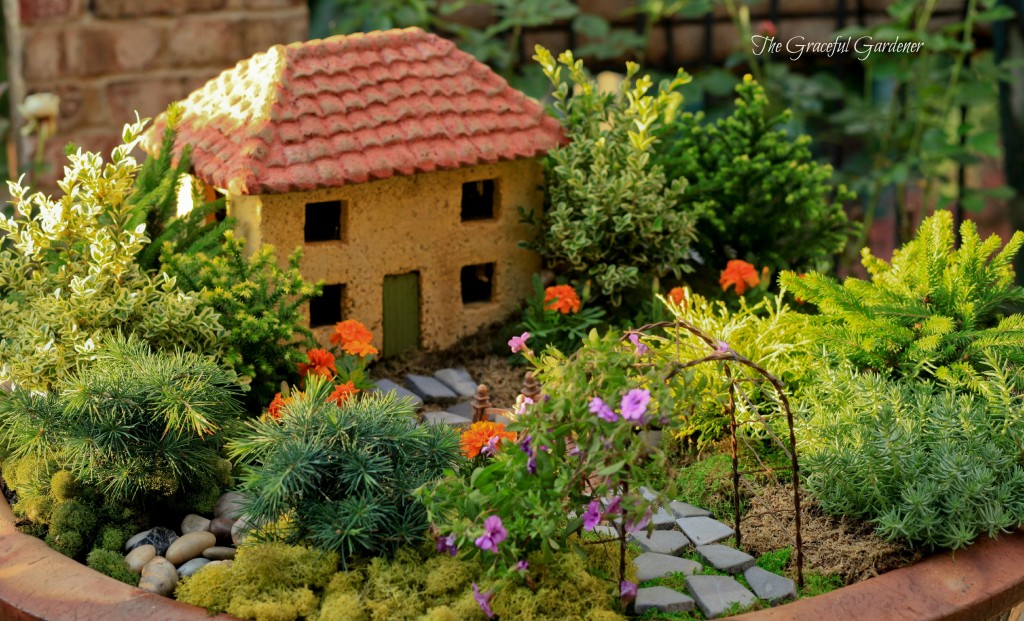
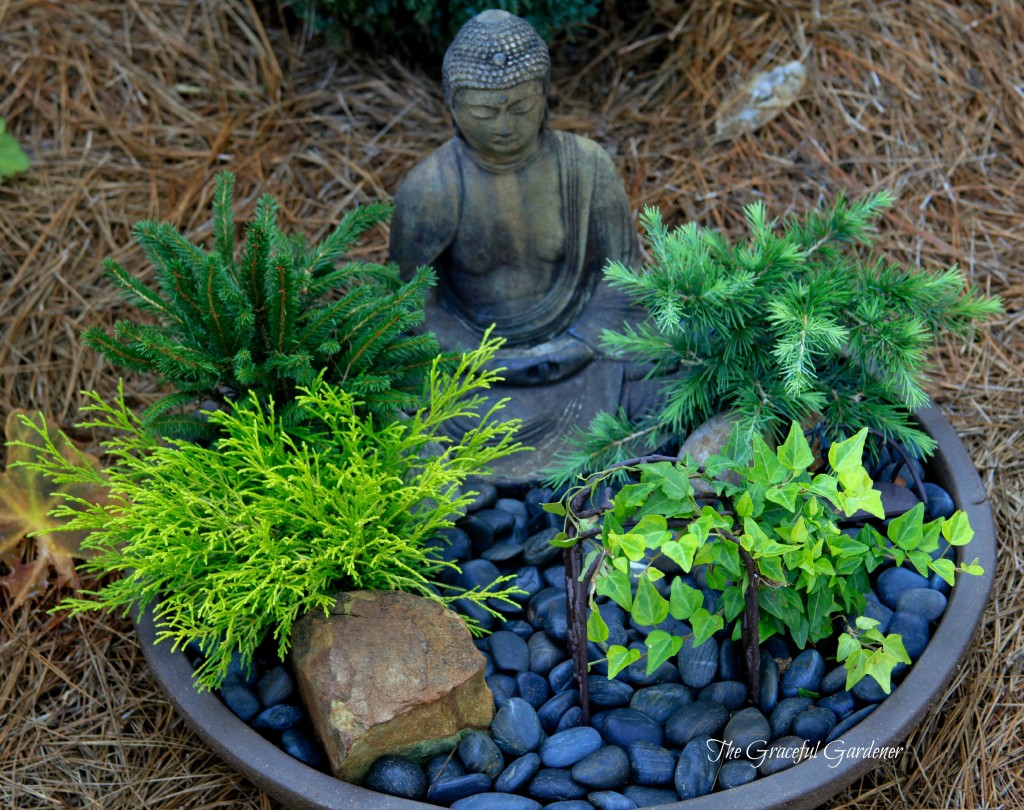
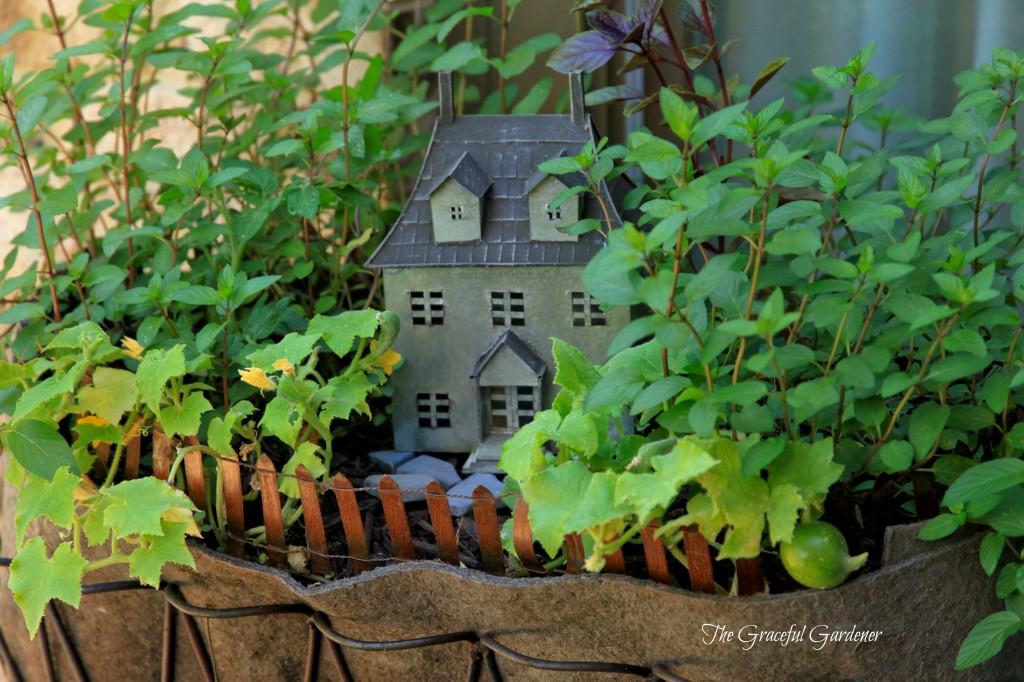

Purple Foliage…

Colossal Orange…
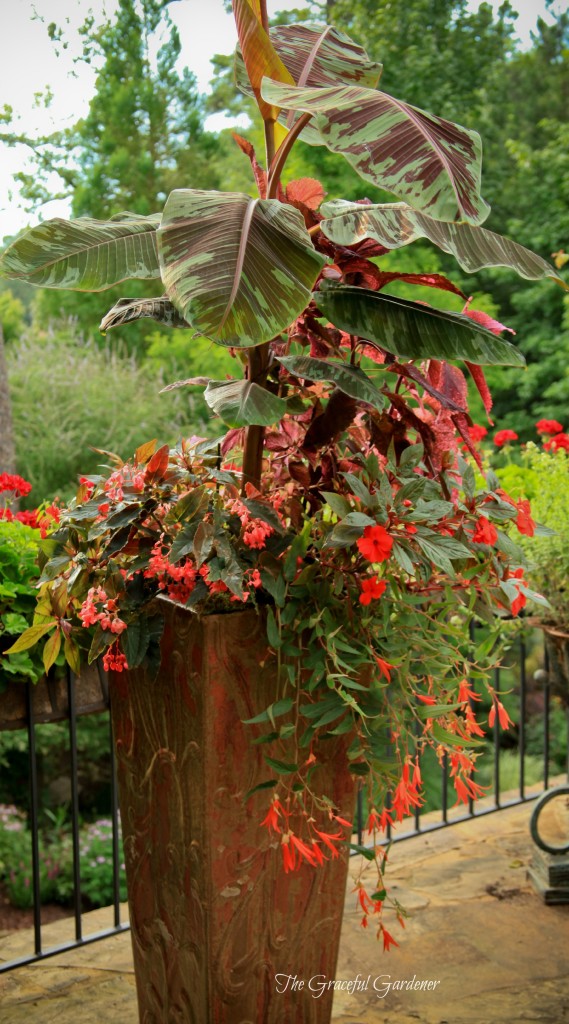
Do you enjoy planting your own container gardens?
Check out my post from last year here...
Flirting in my Garden….my Fringe Tree
Nobody likes a show-off but in this case I’ll make an exception. All week my Fringe trees have been grabbing everybody’s attention with their showy creamy white blossoms flirting in the breeze- even glowing in the evening under the moonlight…
~Fringe tree~
Size: 8-20 feet tall, 8-10 feet wide
It is found in USDA Hardiness Zones 4-9.
Bloom time: Flowers from April to May with masses of beautiful drooping white flowers
Exposure: Full sun to partial shade; seems to perform well with some afternoon shade in my Zone 7b garden.
Excellent in a woodland garden
A new addition to my garden this spring is Chionanthus retusus ‘Tokyo Tower’ Chinese Fringe tree. Perfect for smaller gardens or tight spaces. I have mine planted at the edge of my ‘moonlight’ garden surrounded by my Annabelle and Snowflake hydrangeas, white camellia, Casa Blanca lilies and other white flowering shrubs and flowers.
Profiled by Author/Writer Rona Simmons: An Artful Gardener – Brenda Addington | Women @ Word
An Artful Gardener – Brenda Addington
~ by rona simmons
A Discriminating Eye and a Garden Trowel
(An Essay by Rona Simmons)
I visit gardens when I travel, whether they are public gardens, private gardens, arboretums, nurseries (not the box stores but the old-fashioned kind, the ones owned by people with rough hands and dirt under their nails), garden exhibitions, or even local enthusiasts’ plant sales. These venues are marvelous places, full of beauty and inspiration and often a kindred, sometimes eccentric, spirit, or two, meandering about. Rarely do I leave without an idea to implement in my own garden.
As you might expect, I’m smarter now than when I first began my garden journeys.
At the outset, like other novices, I’d return from a foray with a new plant in hand and sink it into what I deemed to be its rightful place in the garden. With a minimum of effort (including those tiresome but no less important things like weeding, watering, pruning and fertilizing), a modicum of time, and a large dollop of good fortune, nature rewarded me when she chose with wondrous blooms.
My garden awakening came with the purchase of my third or fourth treasure. Suddenly I realized I had to take a step back and consider the larger picture—the canvas, you might say.
Did the color of the new rose, or camellia, or azalea compliment the established ones? Would they bloom at the same time, exploding in one single burst of riotous color but leaving me with nothing but dried leaves and bare boughs in the long winter months ahead? Would they surprise me with something new each time I ventured into the garden, heralding the circle of seasons? Was the arrangement defying the principles of design or did it adhere to the tyranny of triangles?
Sinking further into my self-imposed form of madness, I began to obsess over textures, scents, and associations. Was there variety in my garden—magnolias with their wide, glossy leaves and boughs studded with lemon-scented summer flowers that spoke of the old south as well as pines, three and five-needled cultivars with cones to collect and toss on a winter night’s fire? Were there pathways through my garden that drew the visitor’s eye, teasing them to take a first step then another, tantalizing and engaging them?
I came to realize that I wasn’t merely gardening. I was creating a work of art–a painting on a canvas of earth, a short story in colors and textures and living things. For inspiration, I sought role models from a different sort of gardener, those with a discriminating eye and experience with a trowel. Artists who garden.
Fortunately, I have had the privilege to come to know one particularly artful gardener, Brenda Addington. Brenda approaches her garden as an artist first. She brings to it both an inherited sense of grace and craft from her father, a highly skilled artisan in another media, and her own eye for color and line.
She is not one to sit inside and admire her garden through the window. I know. On one of the coldest days of the year, I found her planting a few of the thousands of bulbs she had special ordered, just the right colors for just the right spaces. In the spring, if she’s not tending to the dozens of containers that accent her garden, she’s photographing them for her website or blog. And, in the fall, she’s likely to be constructing a cascade of pumpkins on the stairs leading from her front door to her garden.
Brenda’s garden embodies all of the aspects of an artful garden. It is a delight for the senses. Her colors flow, huge white blooming Annabelle hydrangeas yield to beds of pink Angelique then mutate again to a stand of mauve tulips. Her textures weave together seamlessly—a burnished iron frog sits above delicate tendrils of a Mandevilla vine in one corner, peach-colored roses soften the blue needles of a deodar cedar in another, and, in a far recess, a stone bridge carves a path to the graceful threads of a lime-green conifer.
Try as I might, my garden just never quite measures up. Thankfully, Brenda does not live too far away allowing me the opportunity from time to time to view what she has created and see where I’ve gone wrong.
– – – –
Note: All photos courtesy of Brenda Addington.
Wordless Wednesday in my garden…
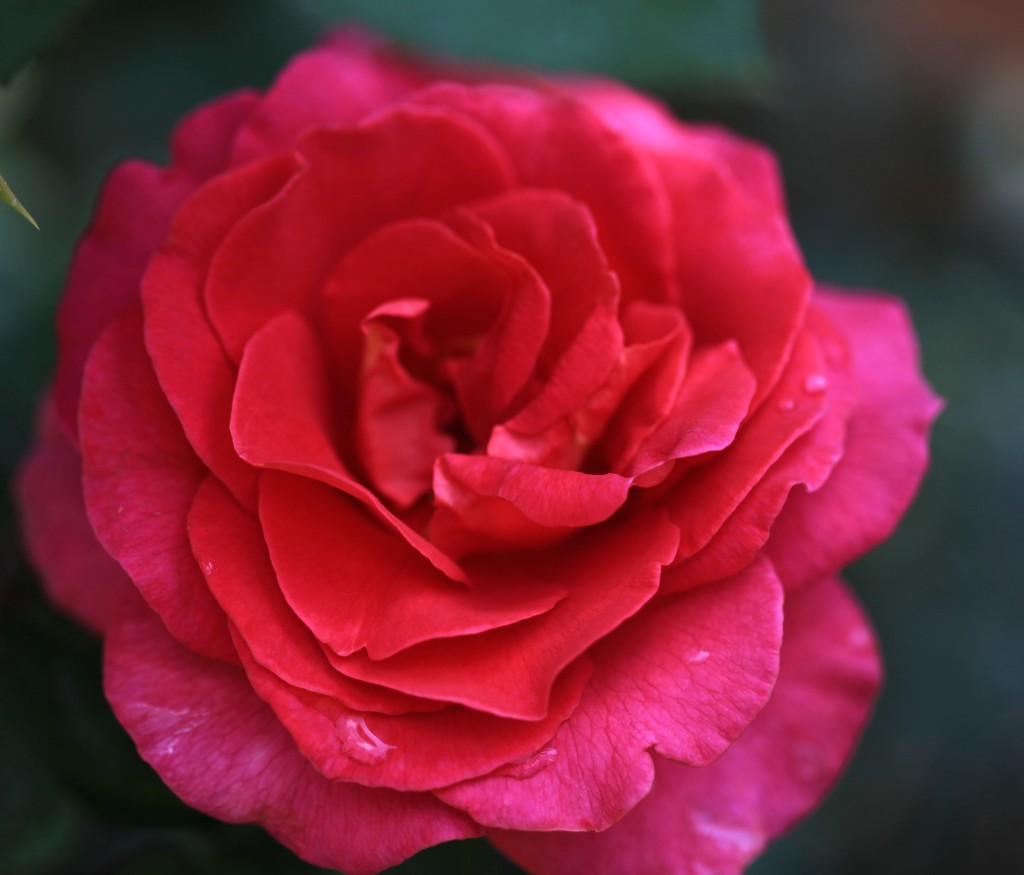
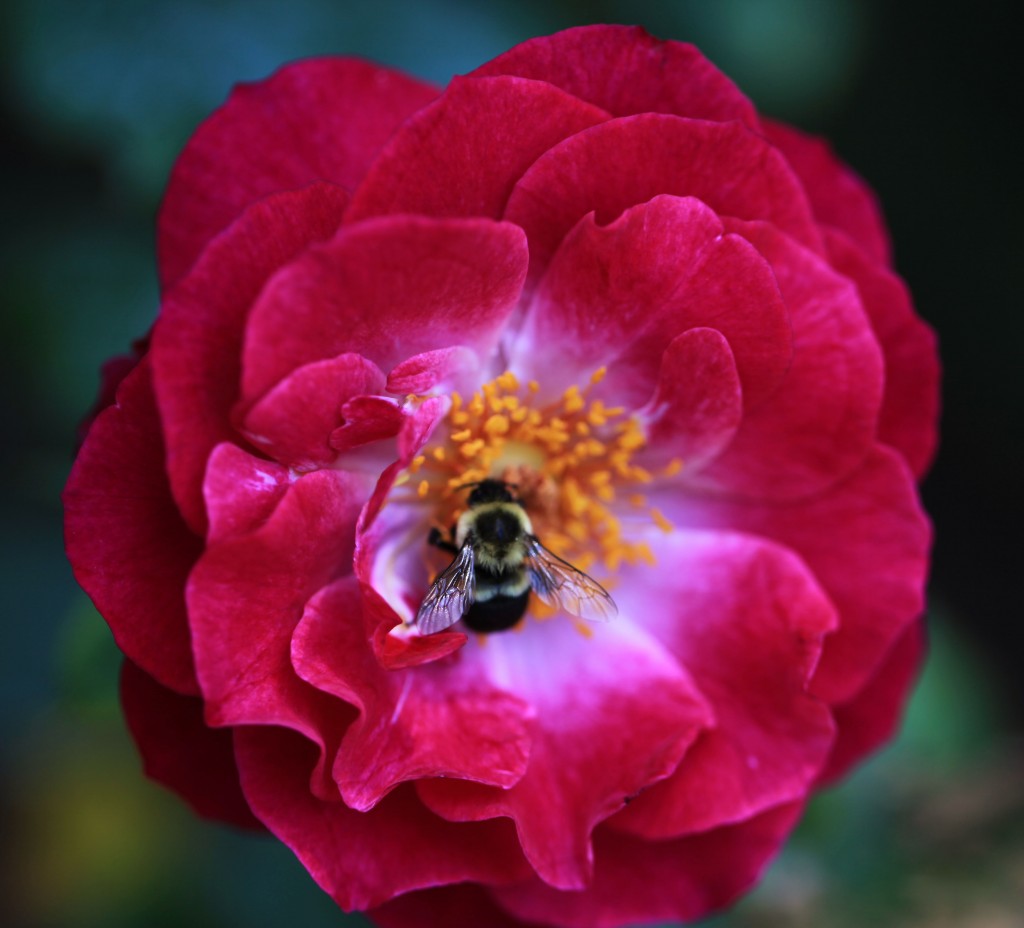
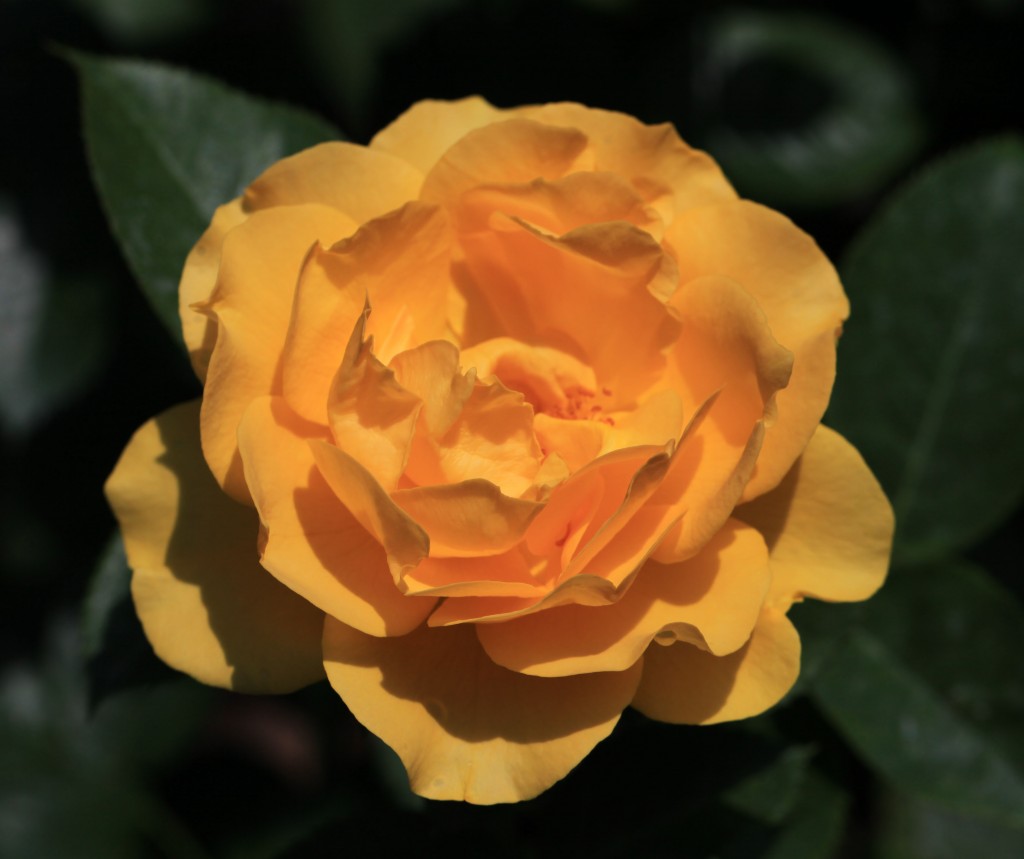

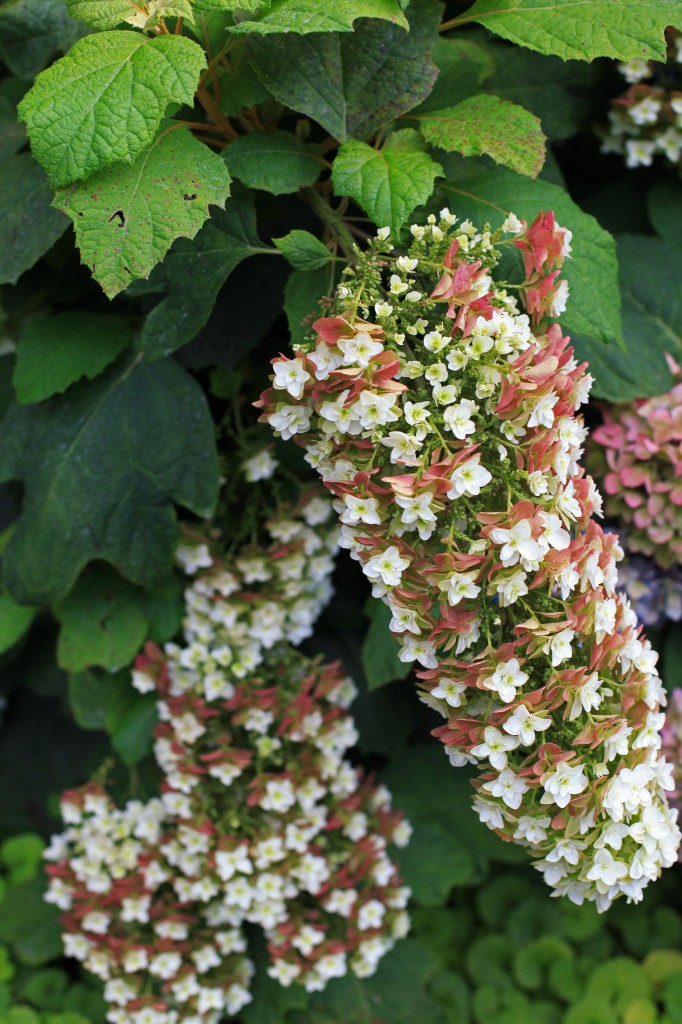
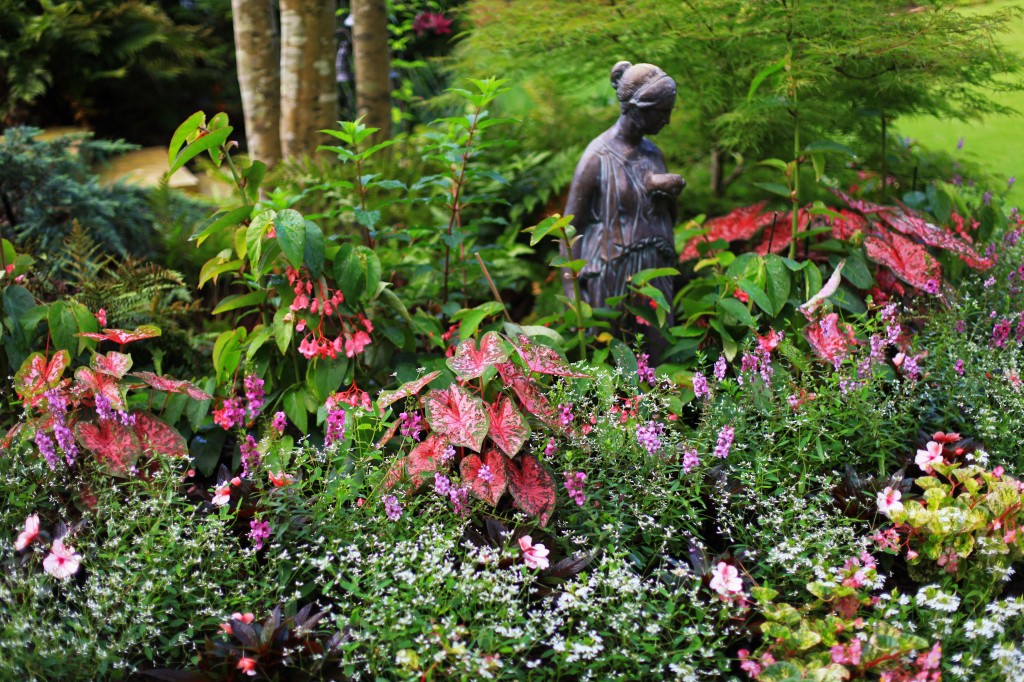
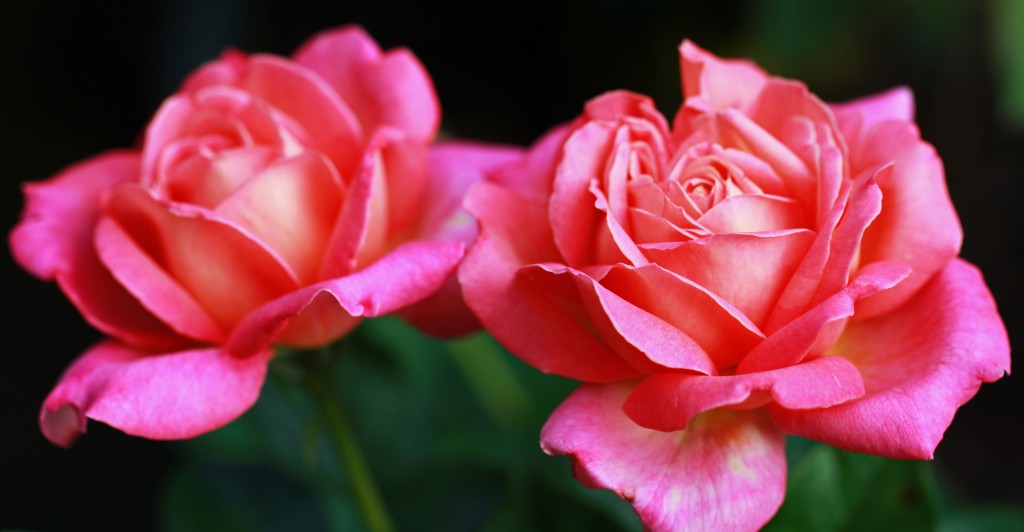
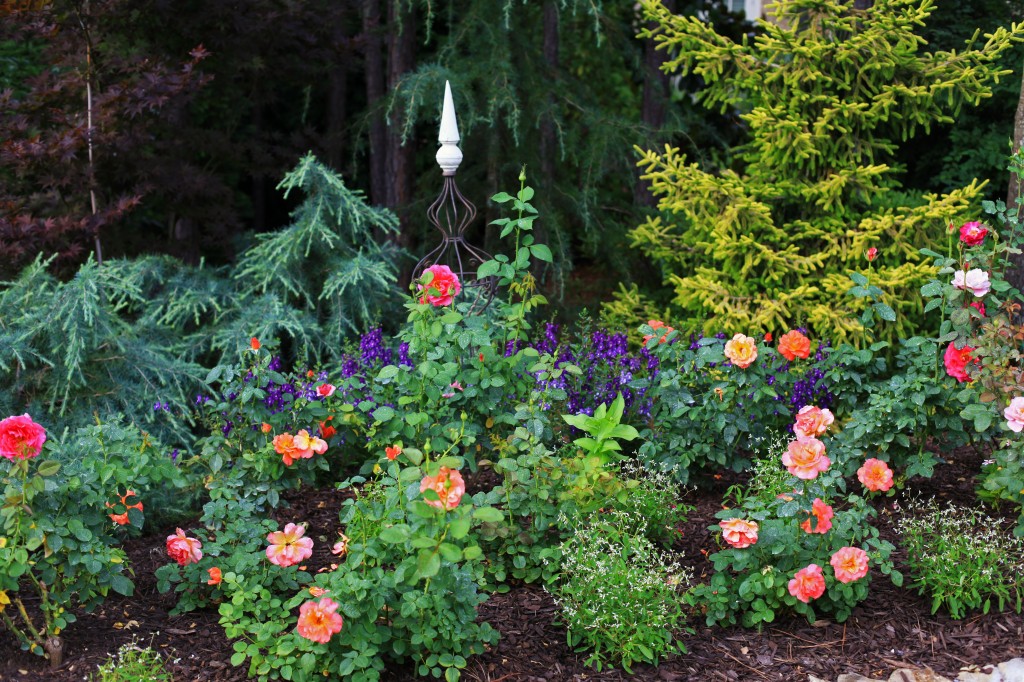
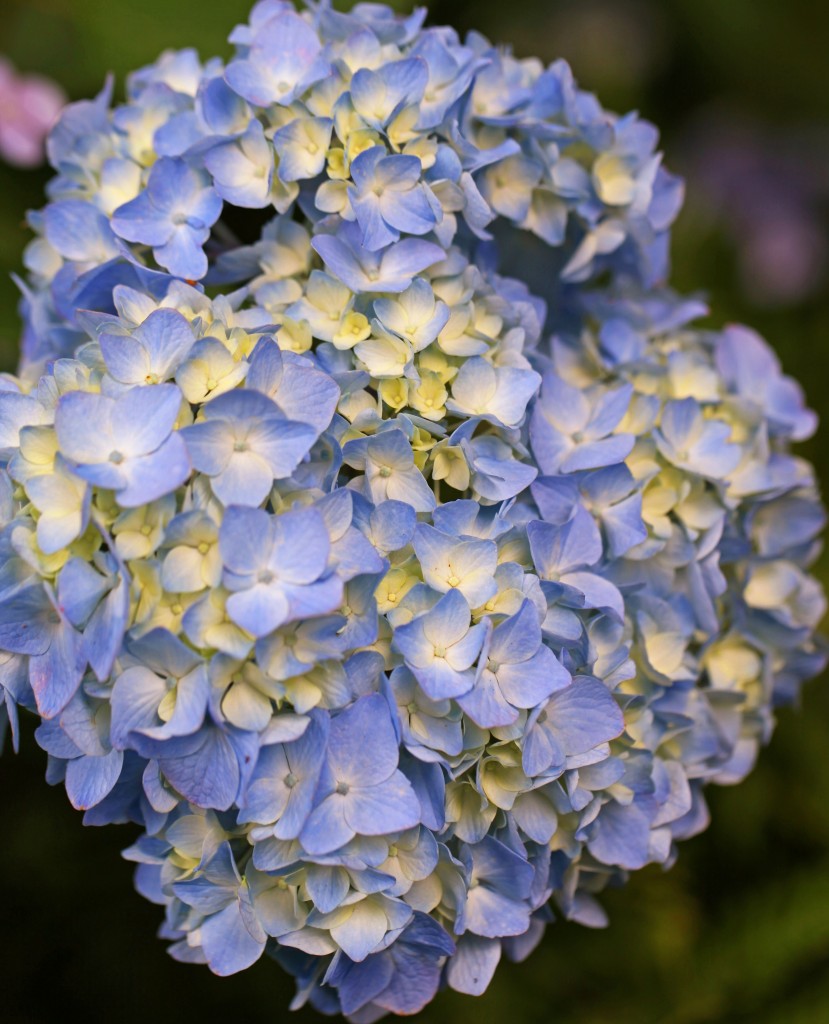
My Fall Kaleidoscope…Fall Color Project 2011
Dave, at The Home Garden, has been giving bloggers the opportunity via ‘The Fall Color Project’
http://www.FallColor.GrowingTheHomeGarden.com
to share their posts & photo’s on fall color in their area .
This will be my first year participating.
In the fall , my landscape changes into a kaleidoscope of color, with hues of yellow, red, orange, brown and green.
 Hydrangea quericifolia ‘Snowflake’
Hydrangea quericifolia ‘Snowflake’
 Ginkgo biloba ‘Mariken’- Dwarf Gingko
Ginkgo biloba ‘Mariken’- Dwarf Gingko
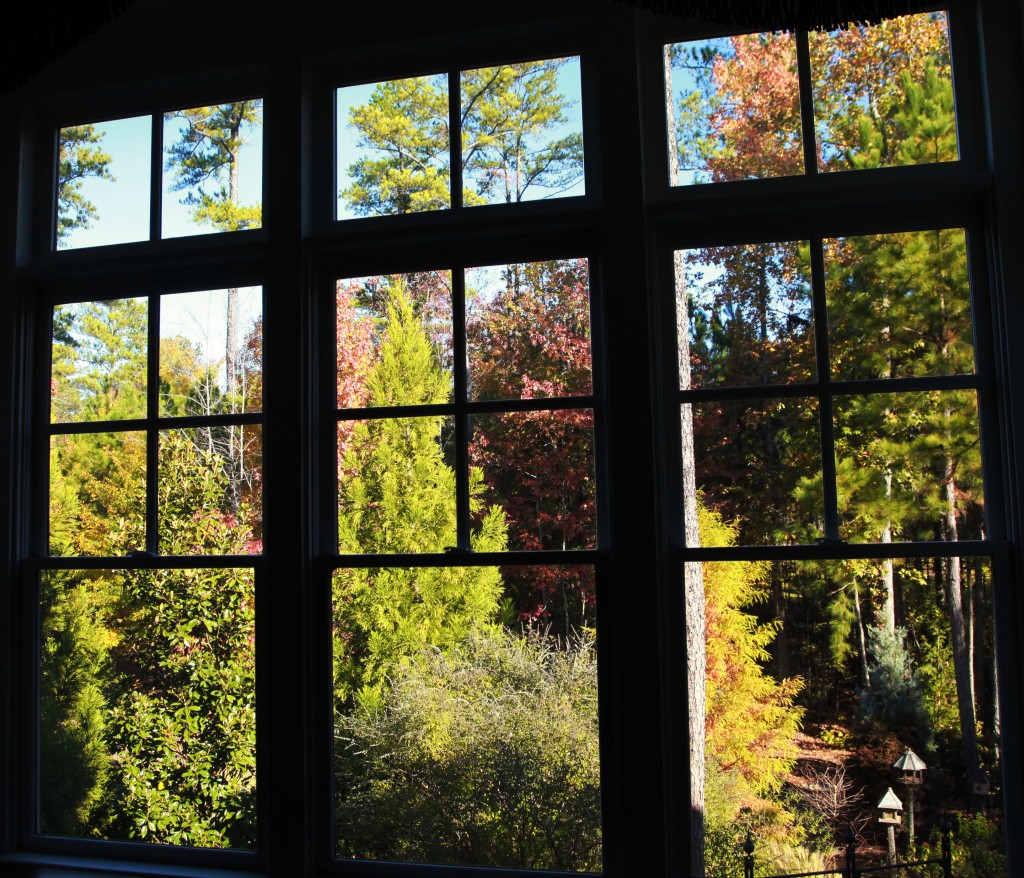 A ‘Window View’ from inside my house…..
A ‘Window View’ from inside my house…..
 Acer shirasawanum ‘Aureum’ known as ‘The Full Moon Maple’ has brilliant orange, yellow, and red fall colors.
Acer shirasawanum ‘Aureum’ known as ‘The Full Moon Maple’ has brilliant orange, yellow, and red fall colors.
“Autumn is a second spring, where every leaf is a flower” ~ Albert Camus
“Planting Roses Makes Common Scents”

“Planting Roses Makes Common Scents”….. so make the time to plant one. That’s exactly what I’ve been doing these last few weeks in my garden. Luckily, since I live in Zone 7b, I don’t have to wait till spring to plant my roses even though I’m sure I will find more to plant once spring arrives. This year I’ve planted several Climbing roses, Hybrid Musk’s, and a few Floribundas. The roses I selected needed to be tolerant of my hot and humid summers, as to keep any diseases down to a minimum, since I’m not an advocate of spraying my roses. Some of the roses I’ve planted are Antique Roses. Antique roses seem to be tougher and are more disease resistant than some of the modern roses. Also, keeping my roses well fertilized with organic fertilizer during their growing season and pruning when needed seems to keep them pretty happy. However, I do have my challenges; living in a heavily deer populated area, I’ve learned that in order to grow ALOT of roses, I’m having to grow them vertically and apply “stinky smelling” deer repellant regularly. Oh, the things we will do for the splendor of the rose….
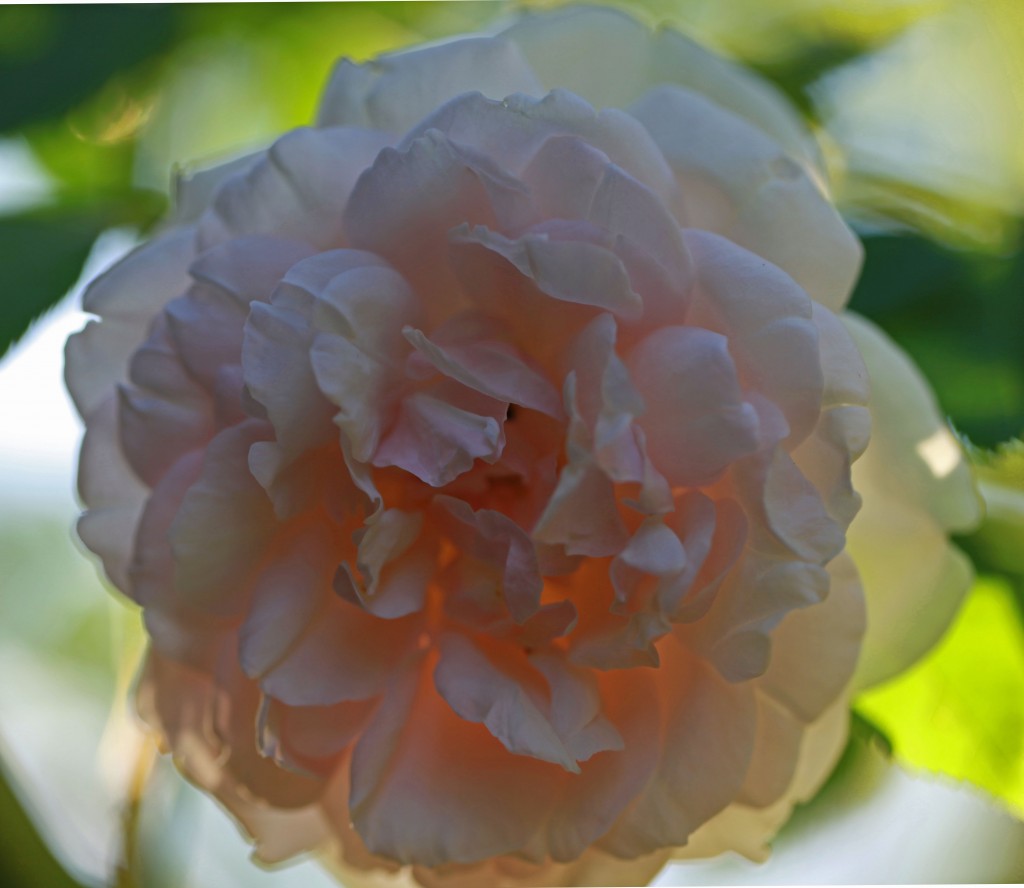
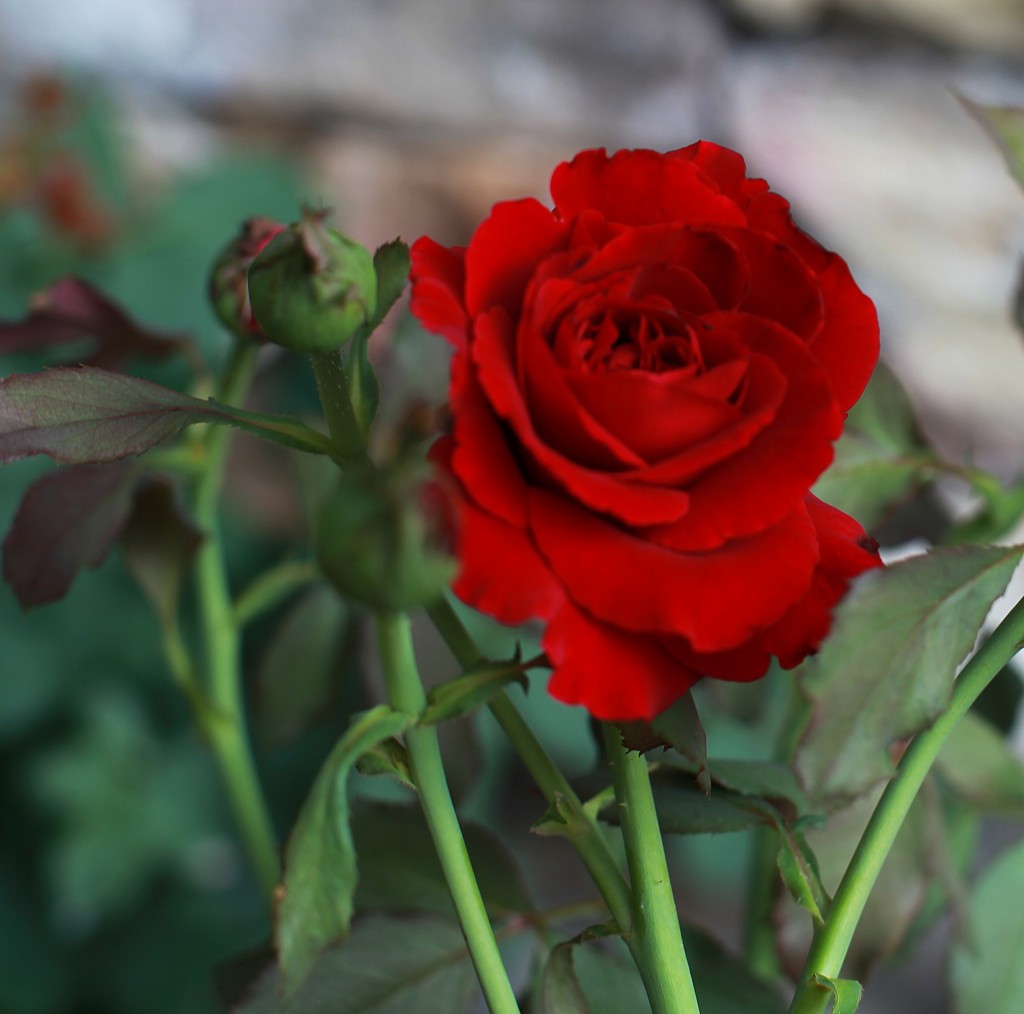
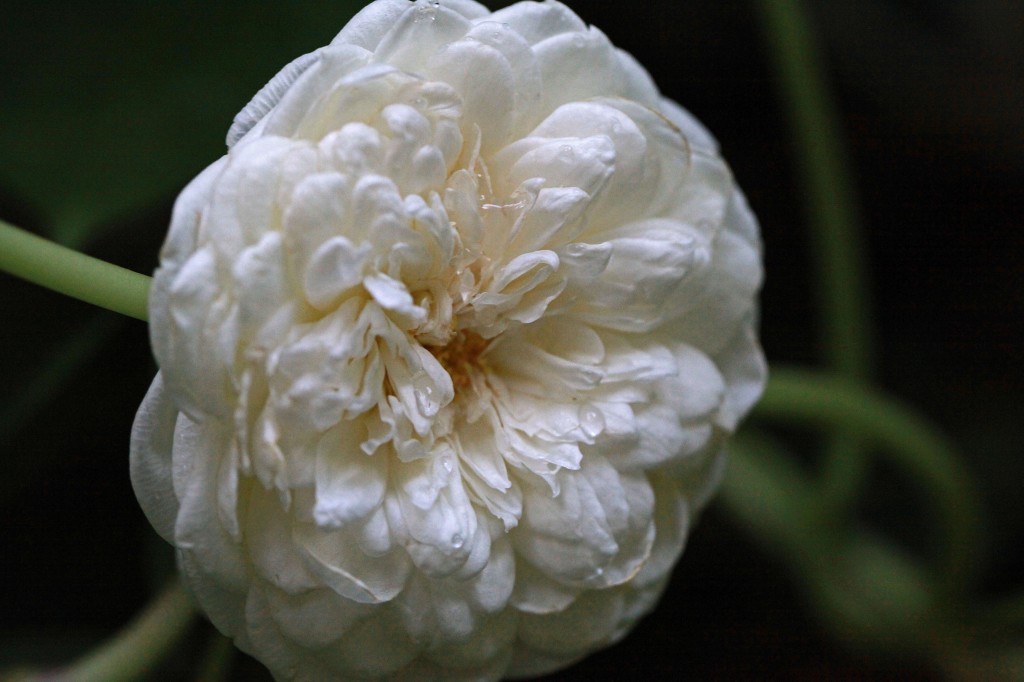
Some of the Climbing roses I planted this year:
- Rev d”Or– Noisette (1869).Vigorous. Flowers are golden yellow,with pale yellow edges and apricot petal backs . One of the best climbing roses for warm climates.. Repeat bloomer. 12′-15′.
- Compassion – Modern climber. Fragrant delicate pink buds open to apricot and fade to butter yellow. Repeat bloomer. 8′-12′
- Golden Gate– (Kordes) . Golden yellow changing to pure yellow,citrus fragrance, repeat bloomer. 8′-10′
- Sally Holmes– Modern climber. Large clusters of peachy buds open to “hydrangea-like” creamy white blooms. Repeat bloomer. 6′-8′ (small climber).
- Evelyn– David Austin rose. Large cupped apricot blooms with a strong fragrance. 6′-8′ (short climber) Good pillar rose.
- Moonlight-( Kordes)Fragrant, semi-double apricot buds turning yellow with edges fading to pink. Repeat Bloomer. 8′-10′.
- Veilchenblau– Multiflora Rambler (1909). Nearly thornless, highly fragrant rambler with large clusters of cupped semi-double violet blooms. Tolerates partial shade. 9′-12′. (Climbing) No repeat bloom.
My Shrub Rose selections:
- Belinda– Hybrid Musk (1936). Deep pink blossoms with yellow stamens and white centers. Repeat blooming.4’x6′ (shrub). Makes an excellent short climbing rose in hot climates.
- Buff Beauty-Hybrid Musk (1939). Beautiful rose with clusters of double blossoms that begin as buff yellow and mature to apricot. Repeat blooming. 4′-6′ (shrub/small climber).
- Lavender Lassie– Kordes(1959). Hybrid Musk. Large trusses of fragrant,semi double blossoms that leans more to the lilac side of pink. Repeat bloomer. 6′-8′ )shrub/low climber).
- Moonlight-Hybrid Musk (1913). Its buds are cream colored and open to soft yellow to white flowers. Repeat blooming. 6′-8′ shrub/pillar rose.
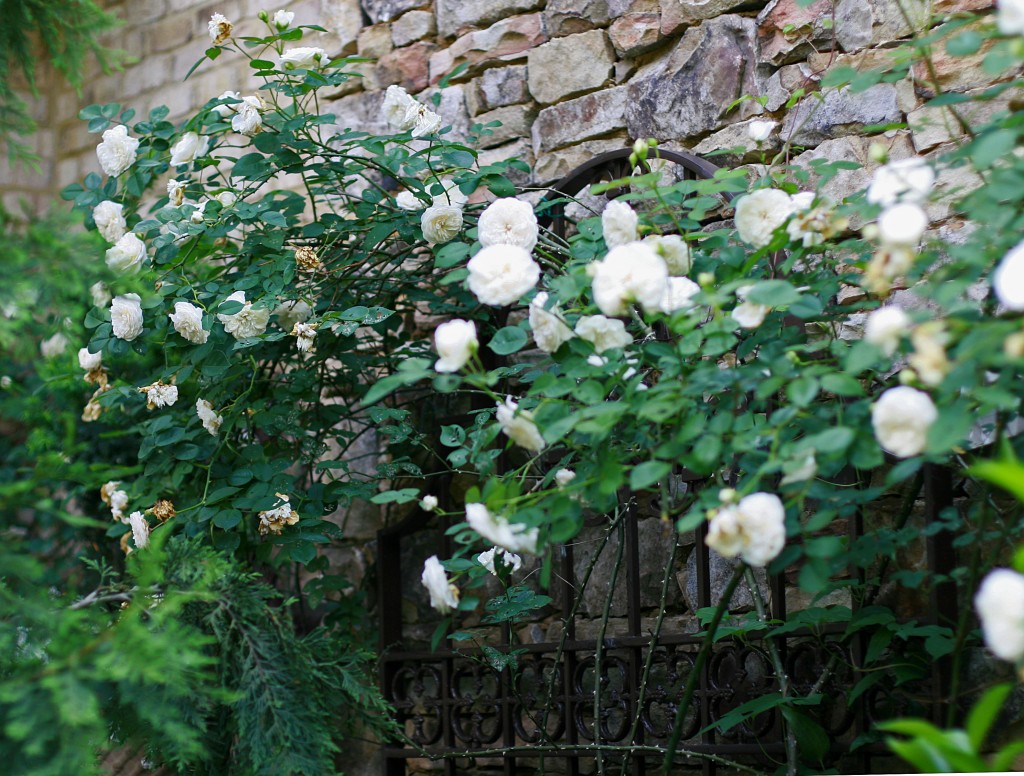
There are so many different ways I use roses in my garden; growing them over arches and pillars, in beds and borders, against walls, on railings, as hedges, and in containers. With just a little care they add beauty, grace and charm to my garden. Planting roses does make “common scents”. Hope you find that to be the case in your garden and that you take the time to plant one. I promise you’ll be glad you did. Happy Planting!

